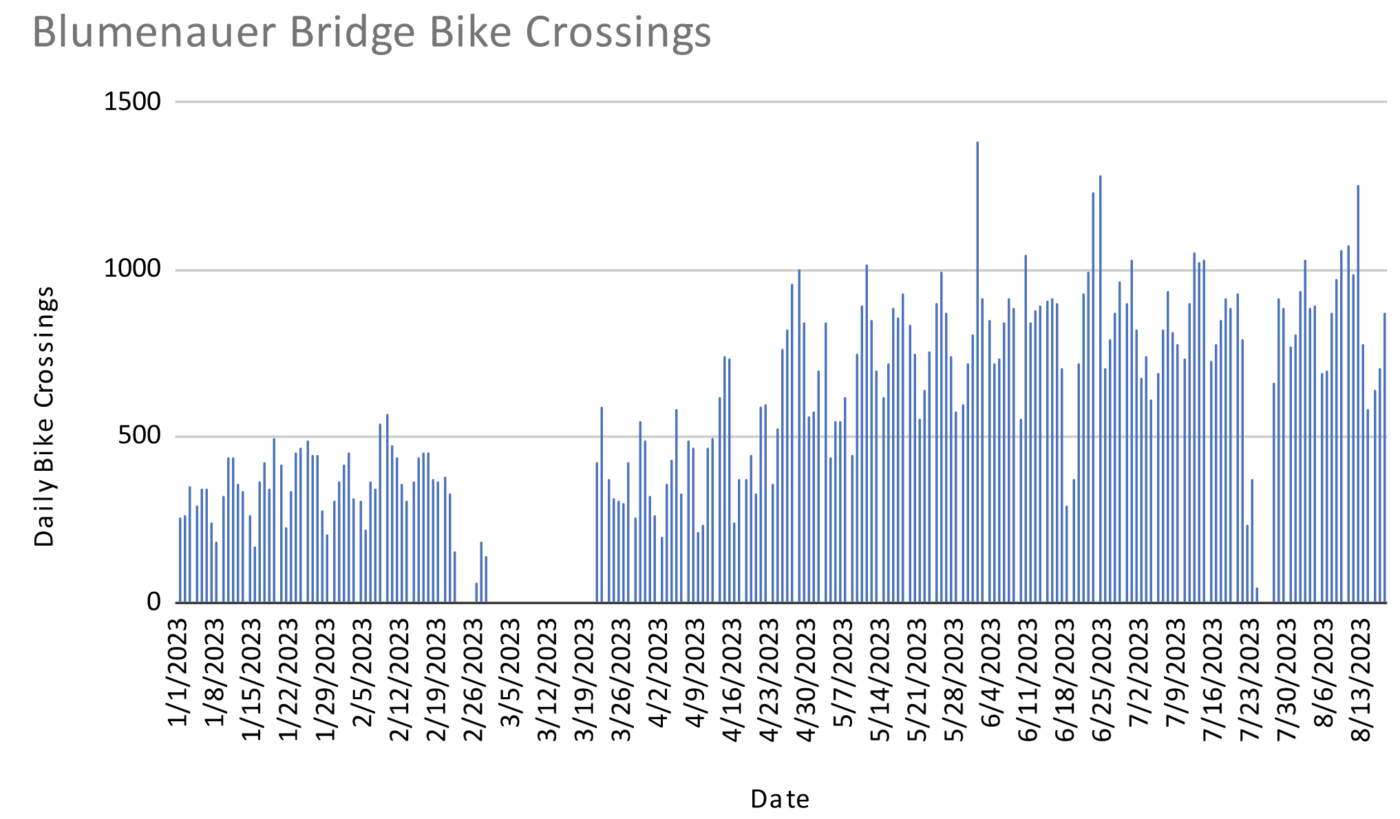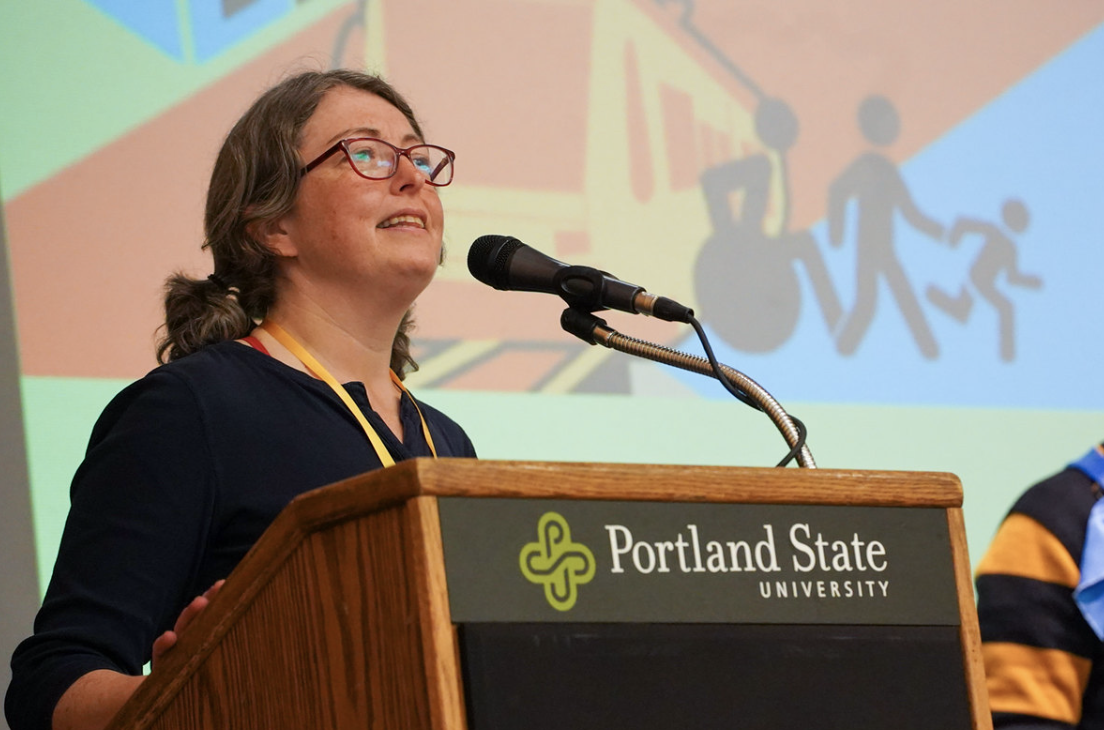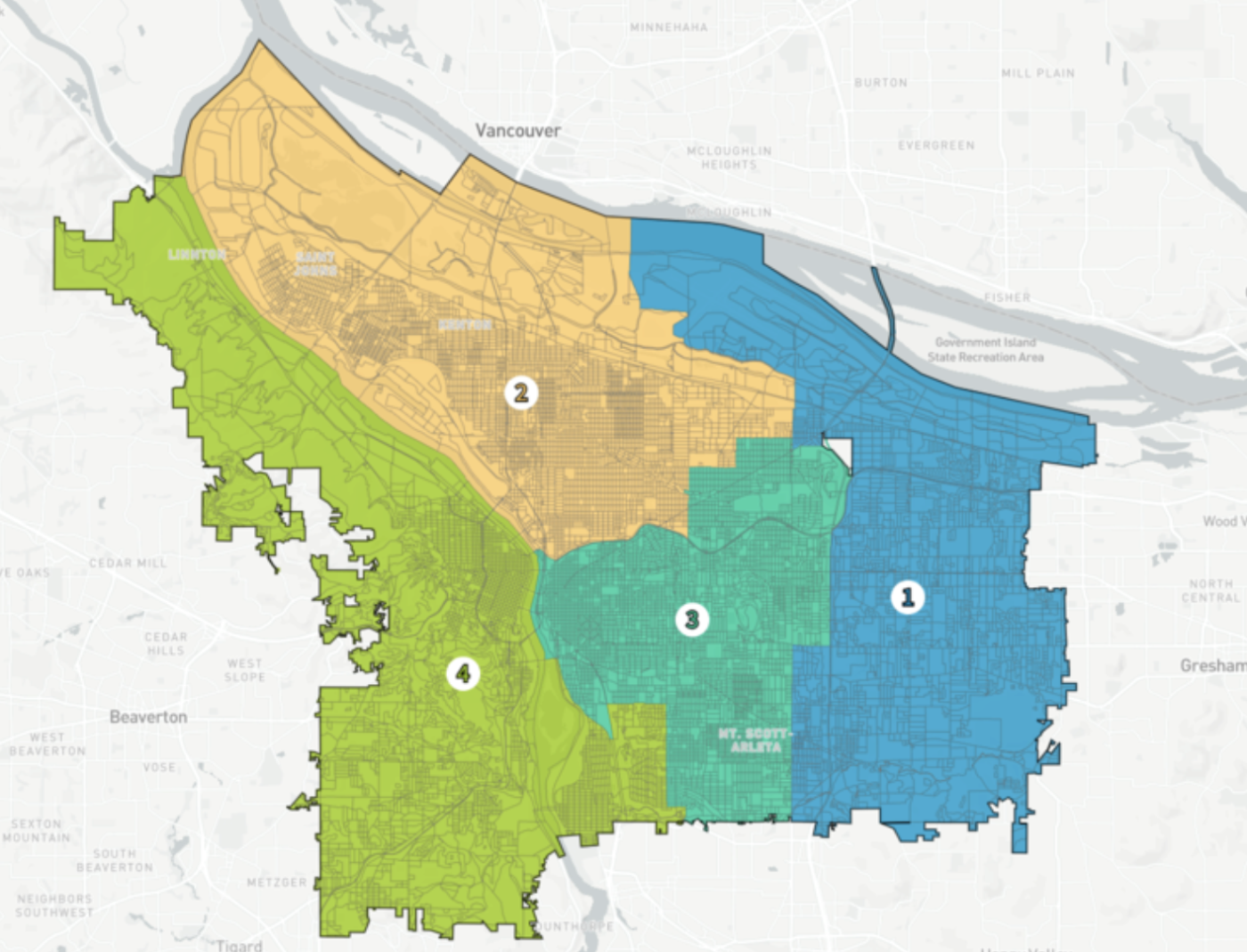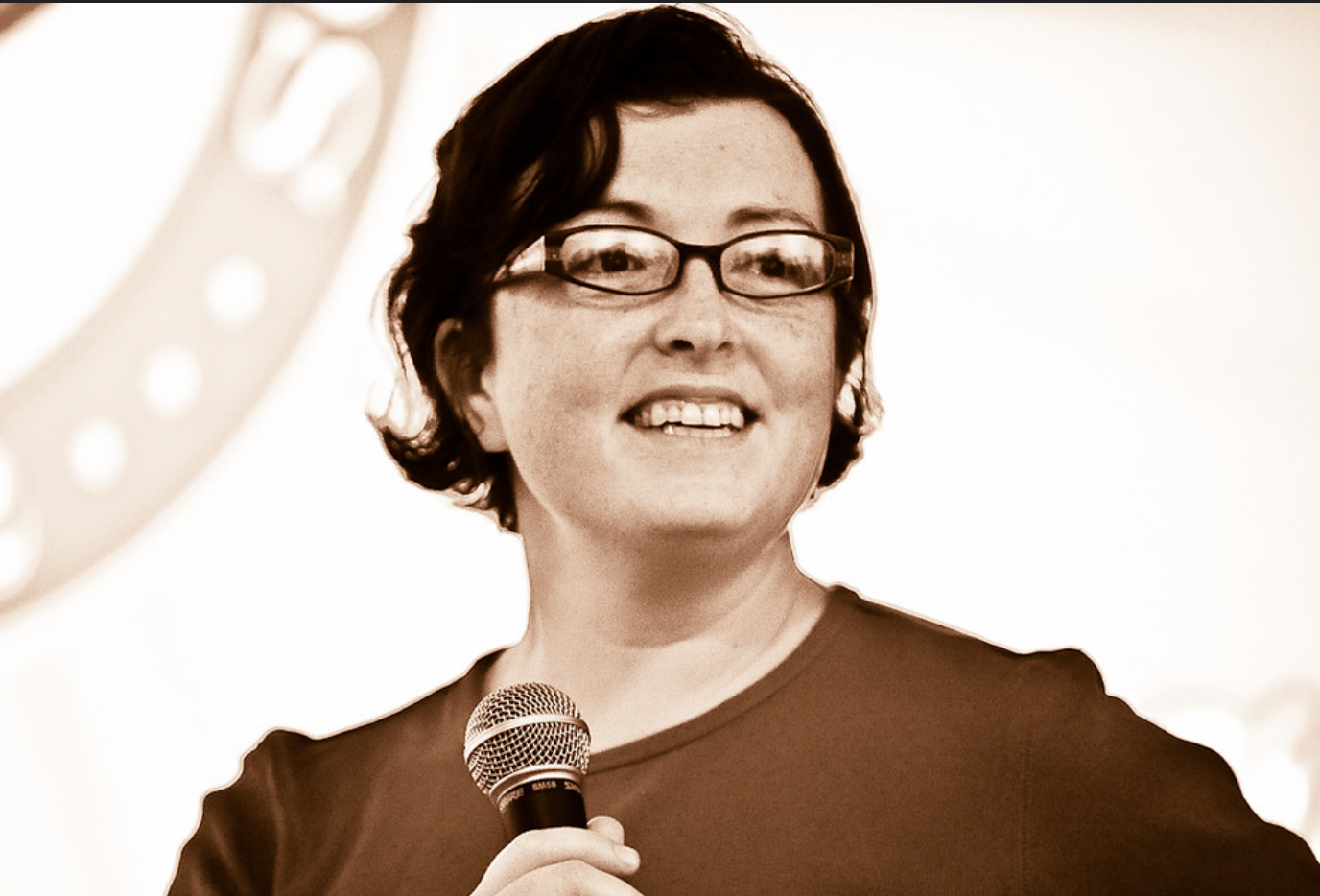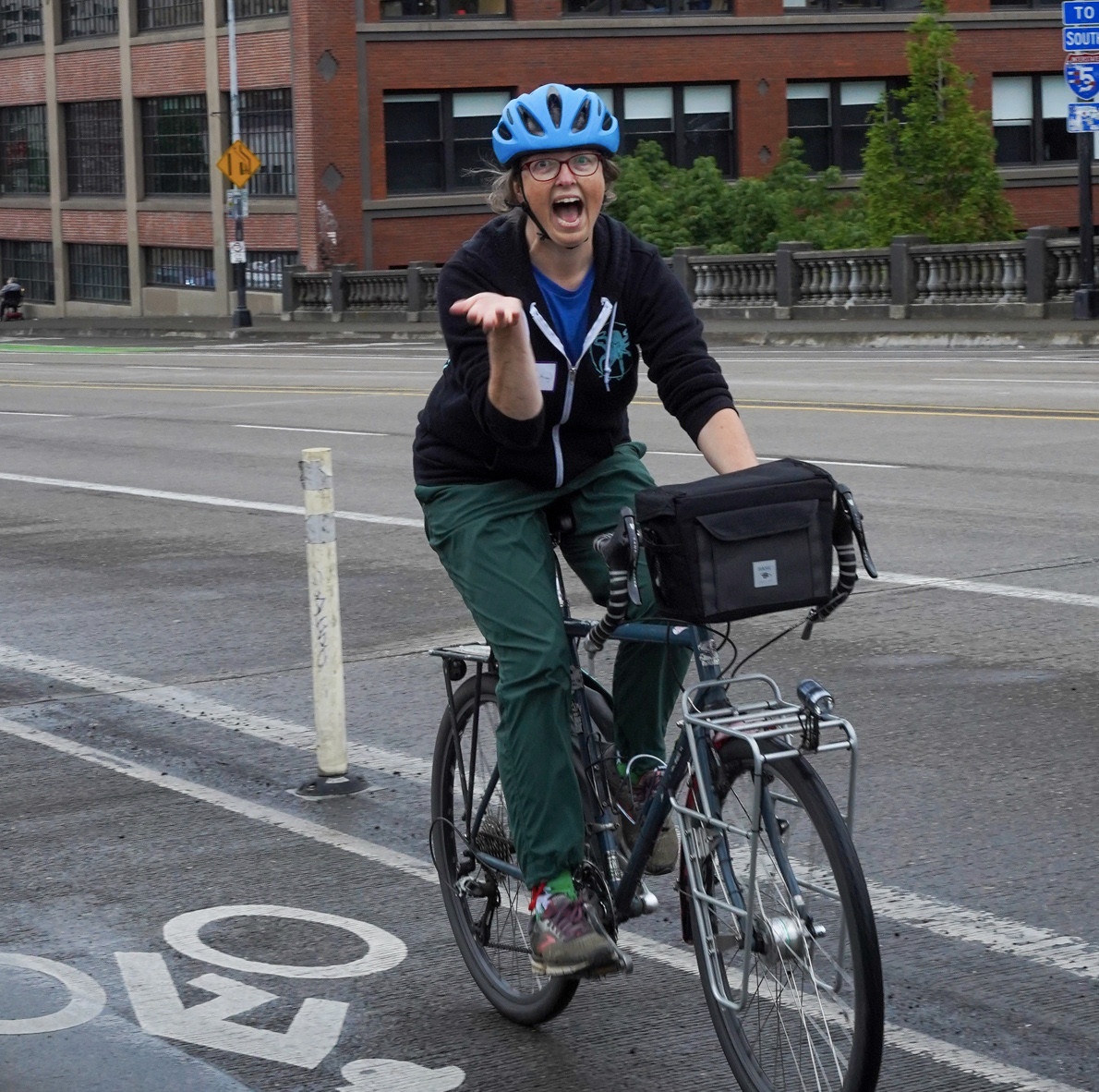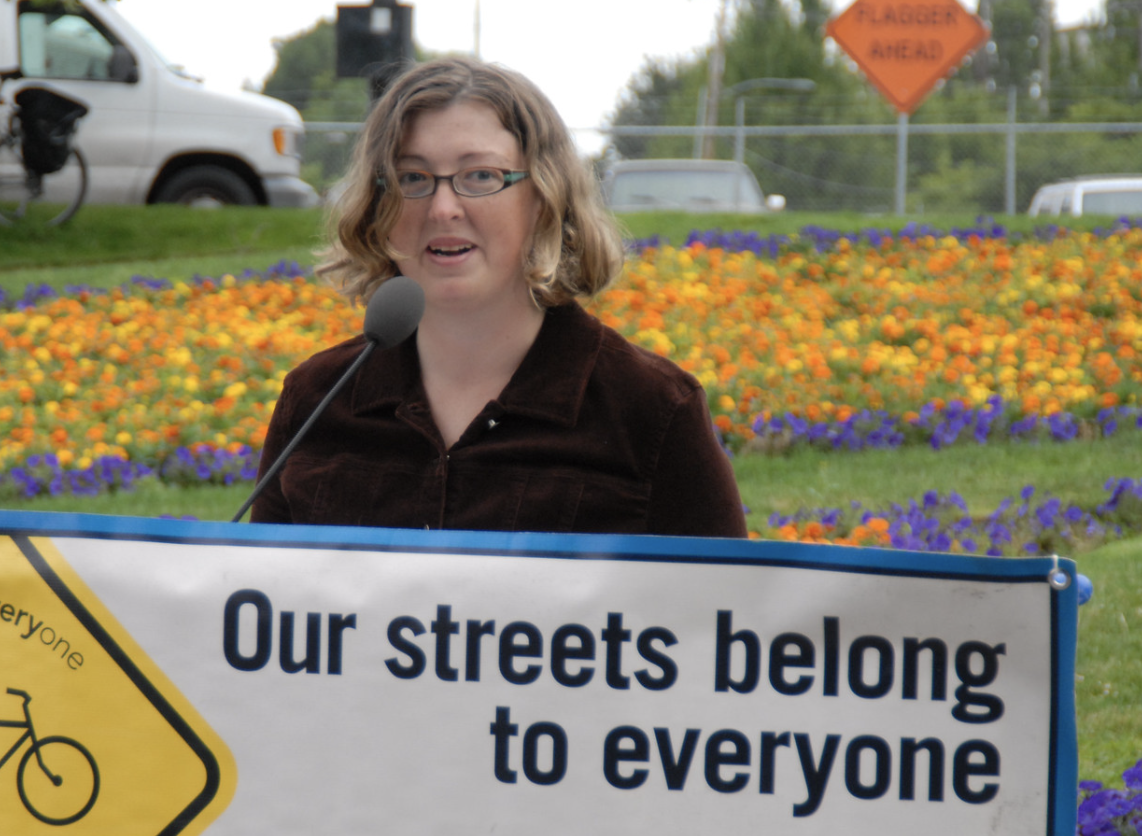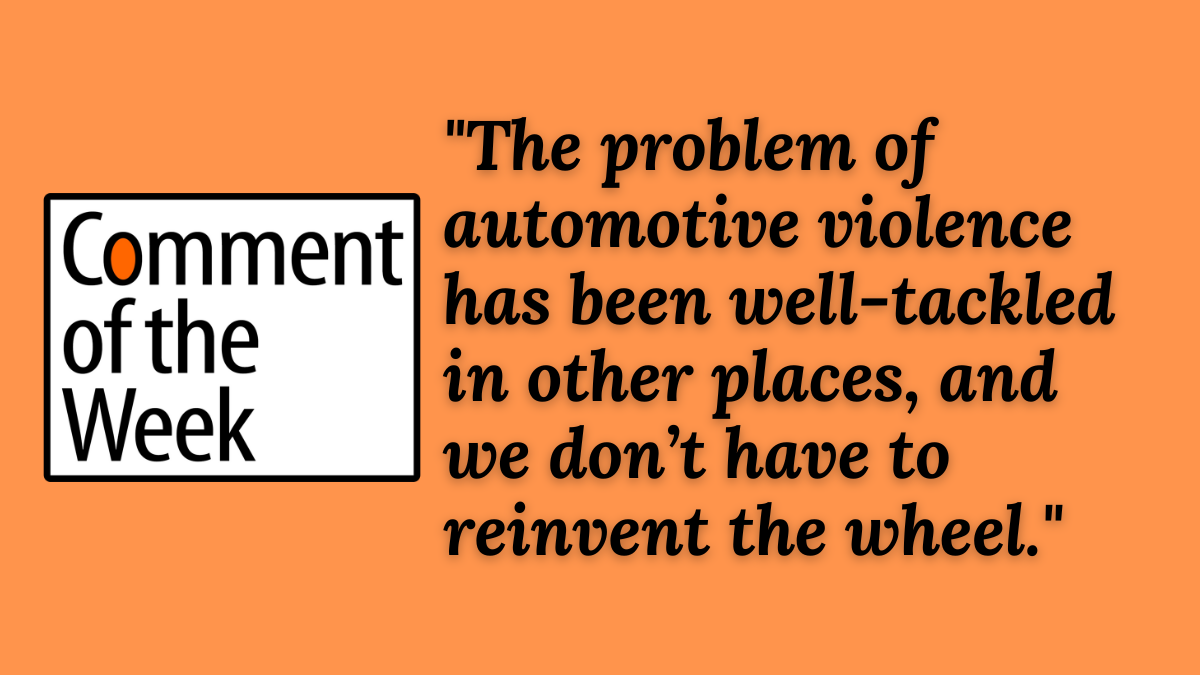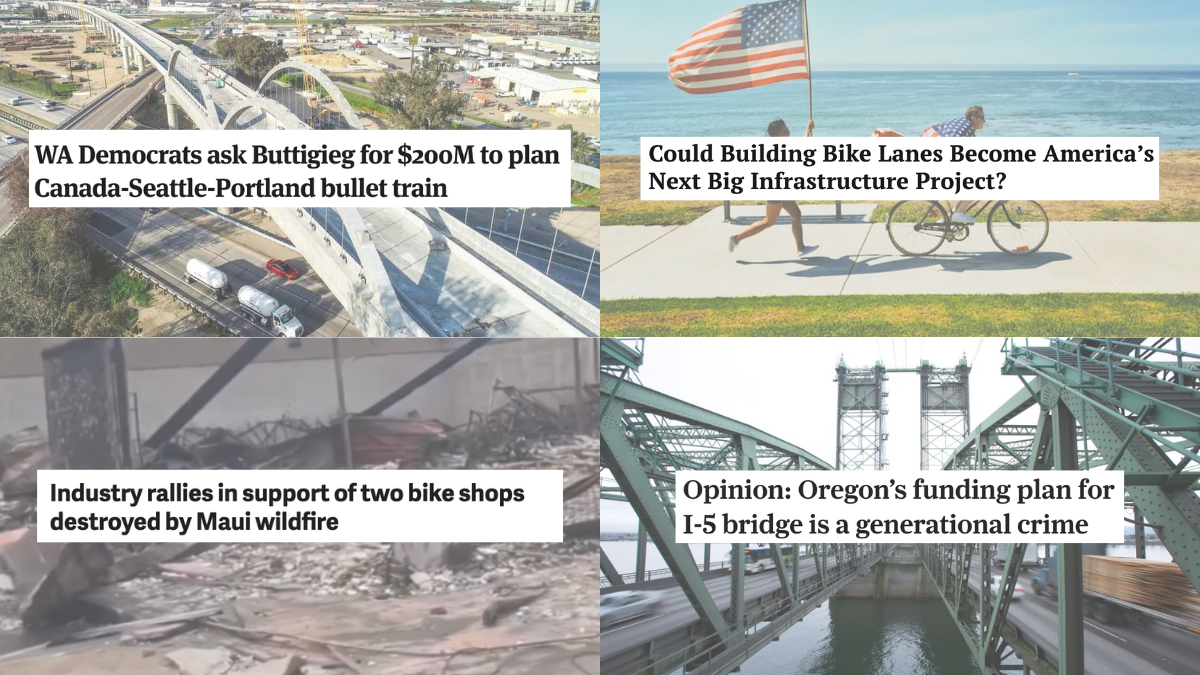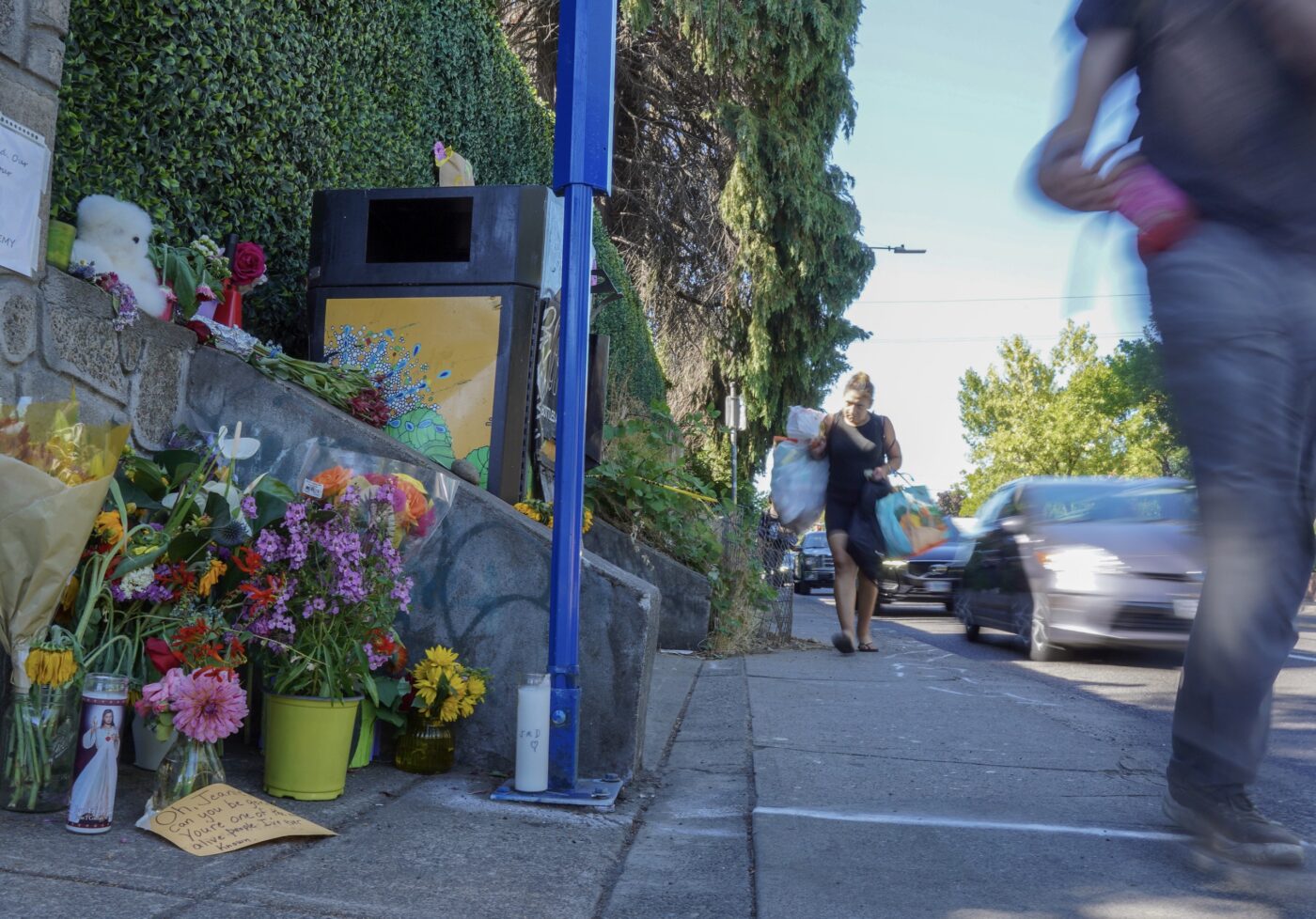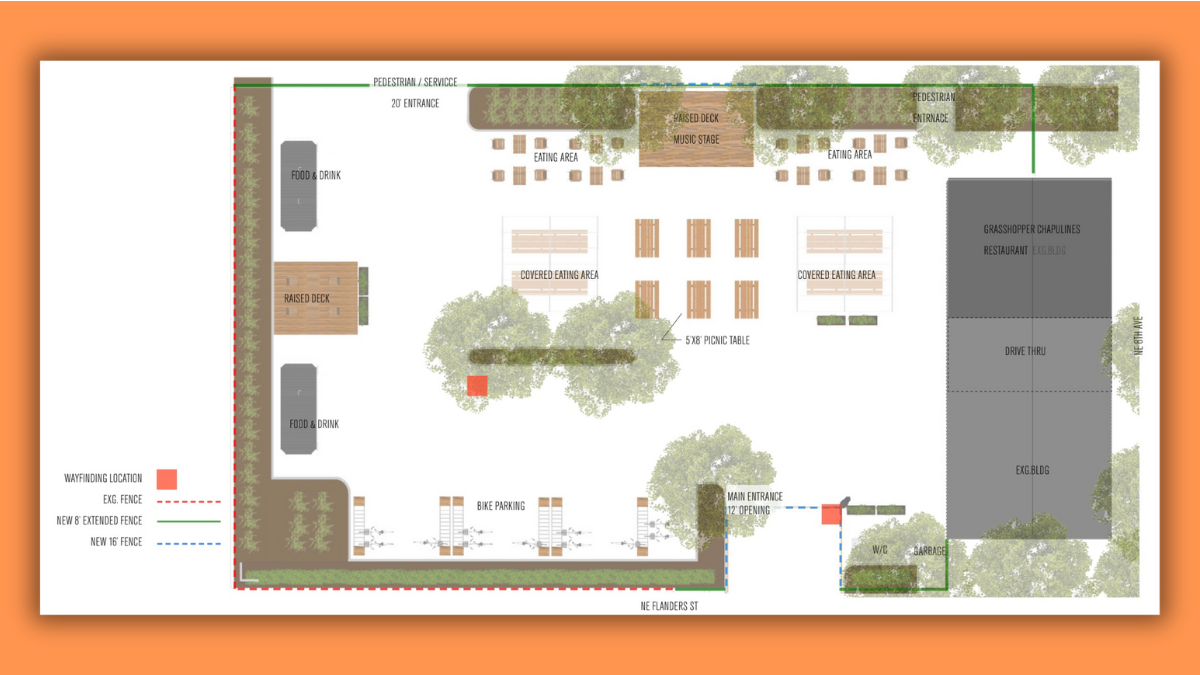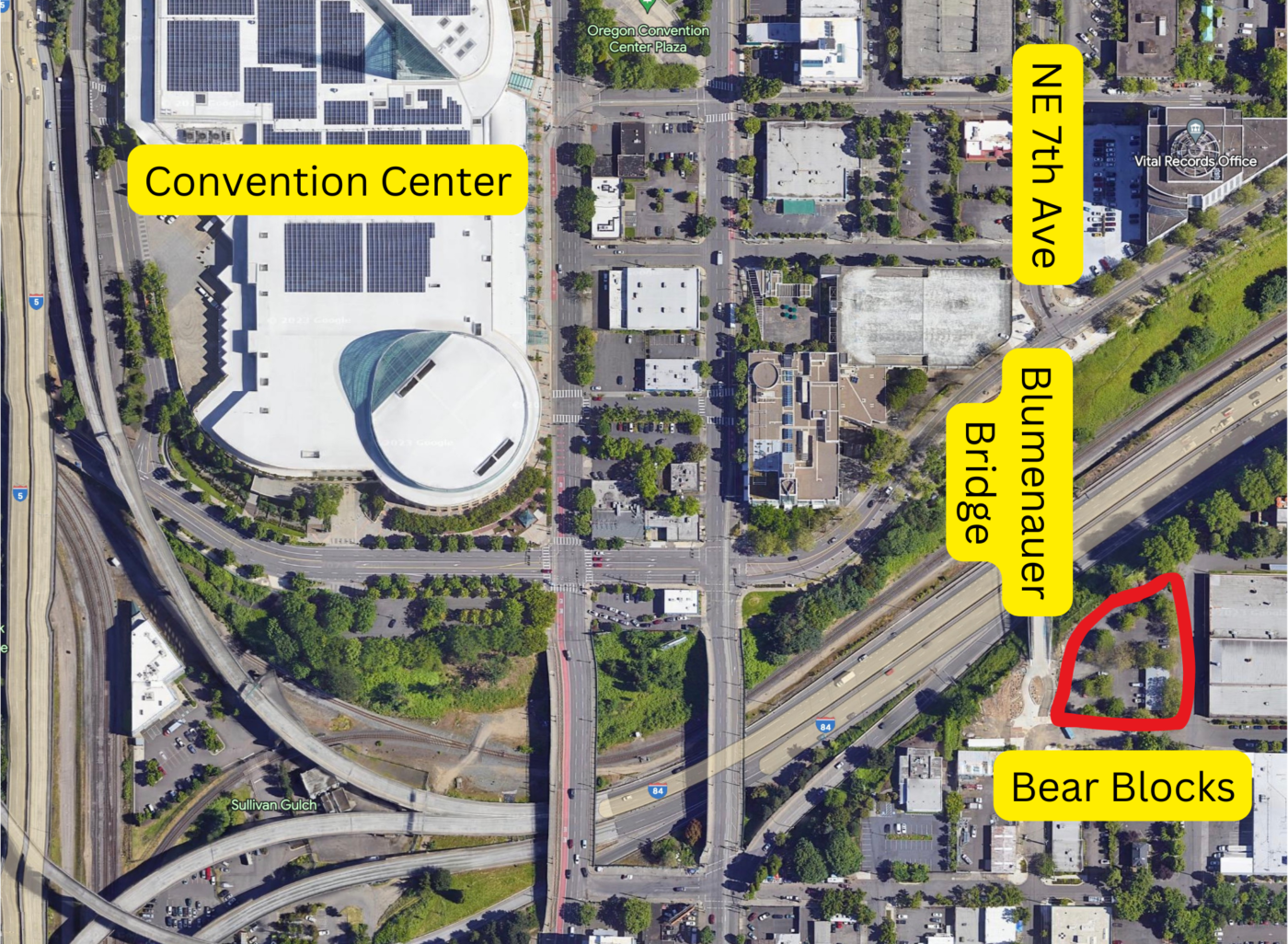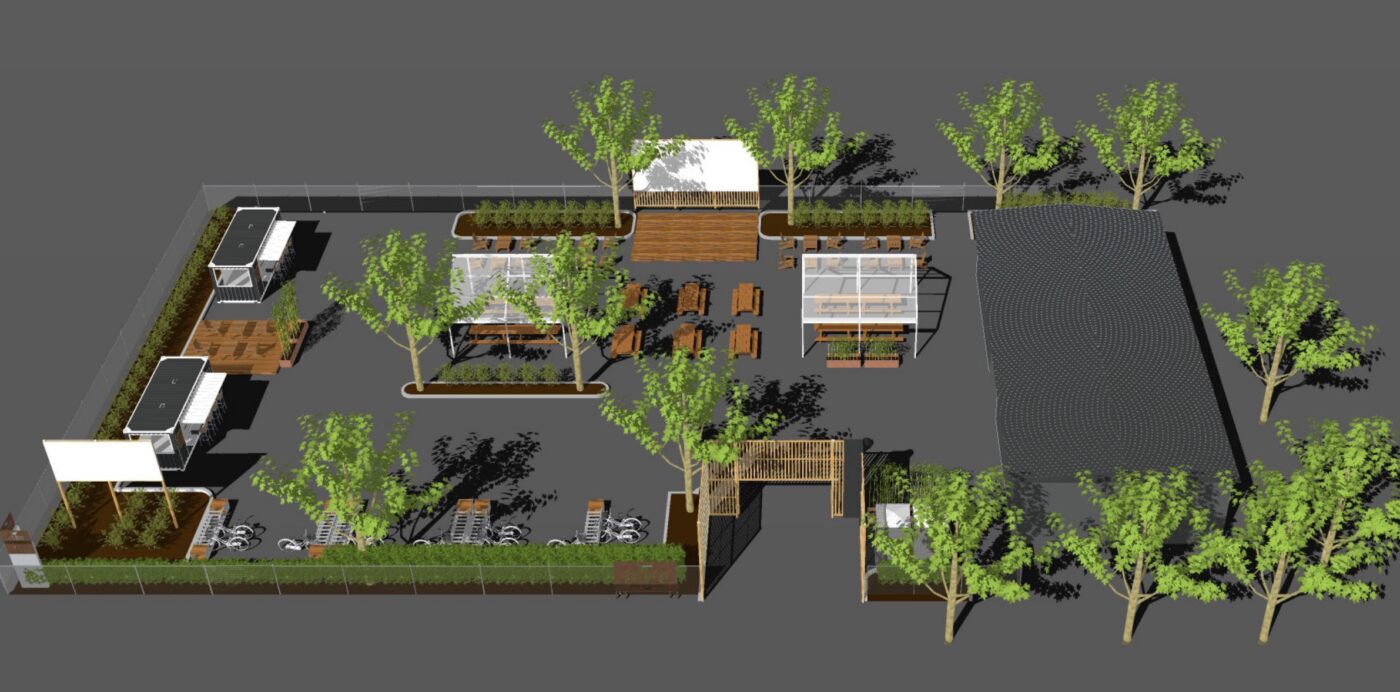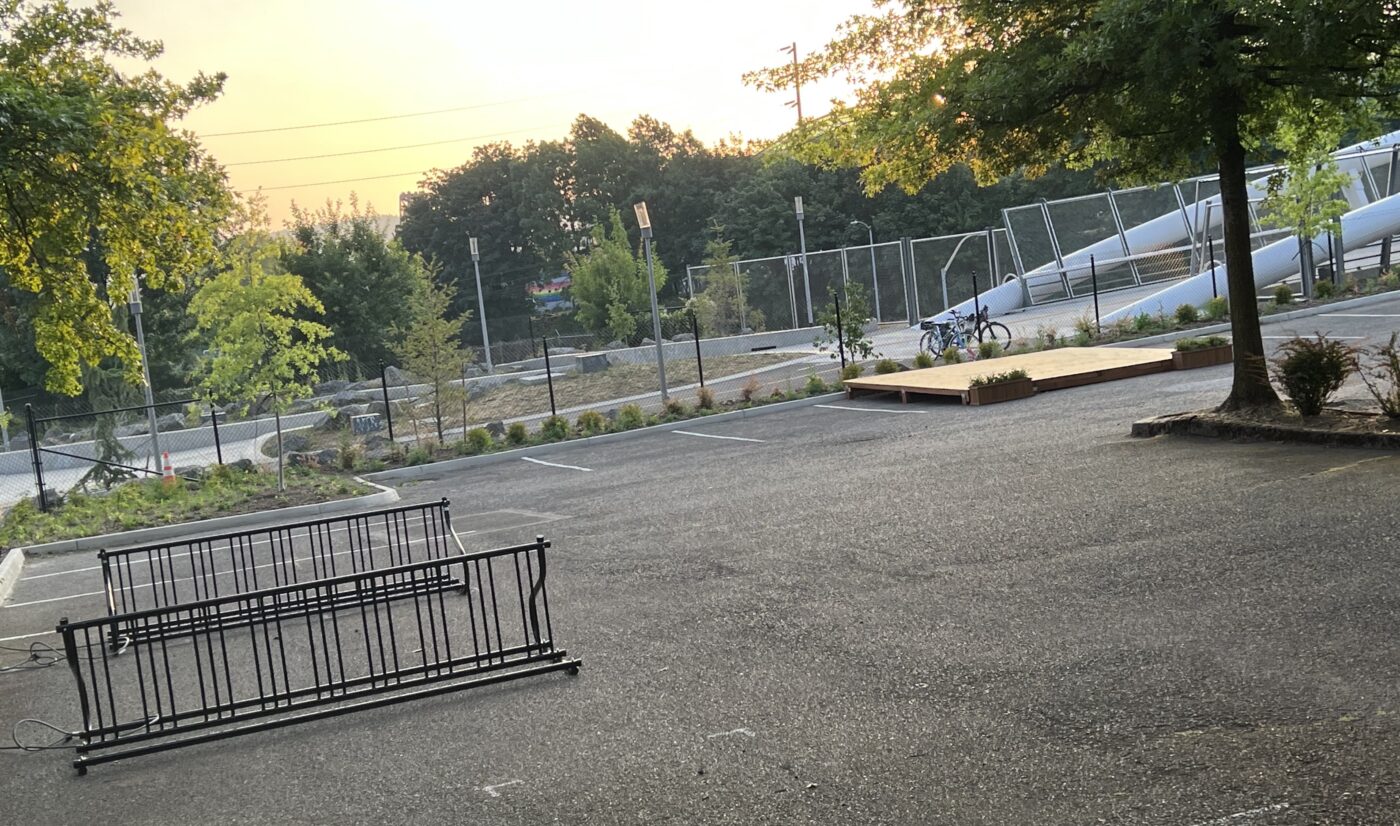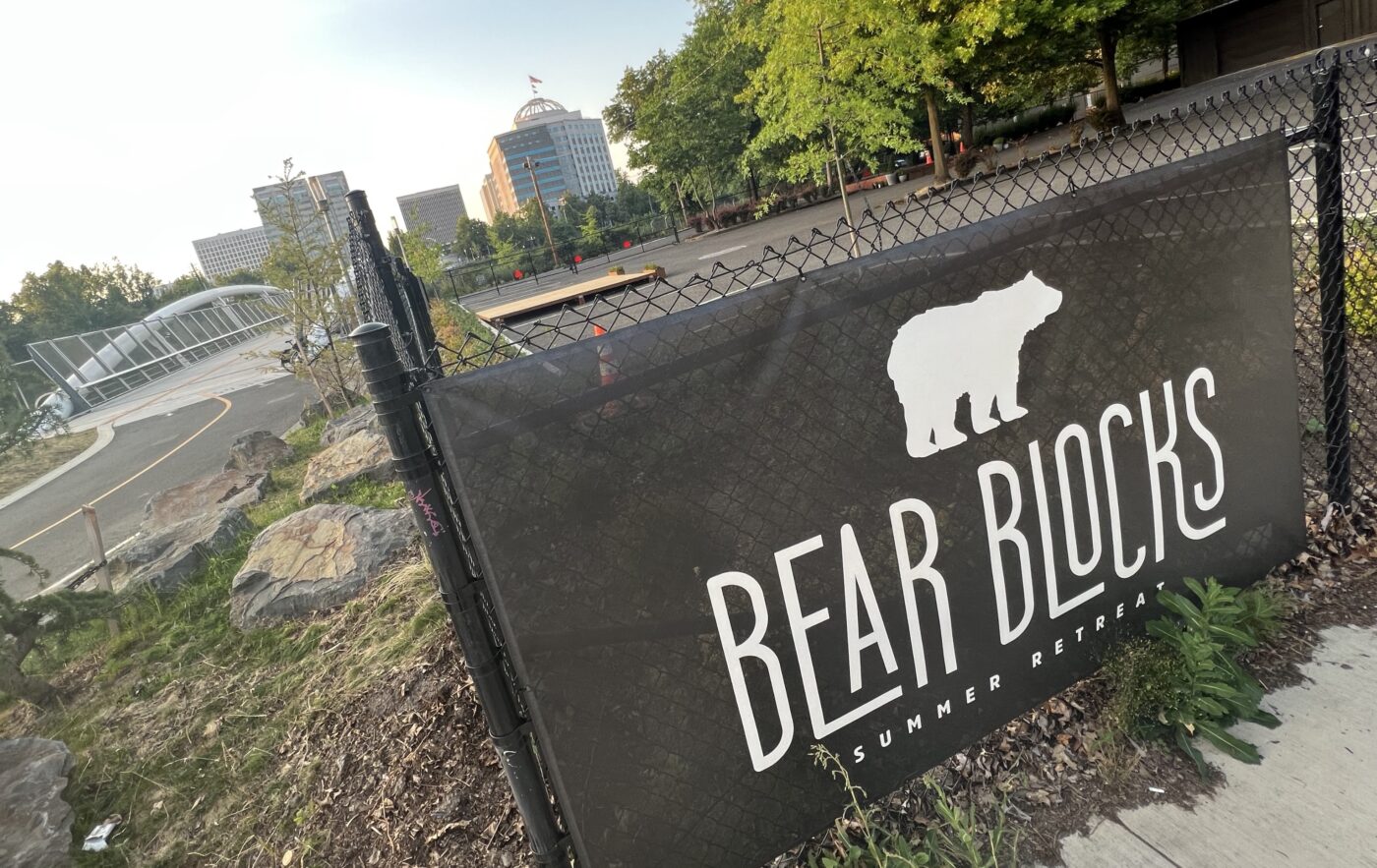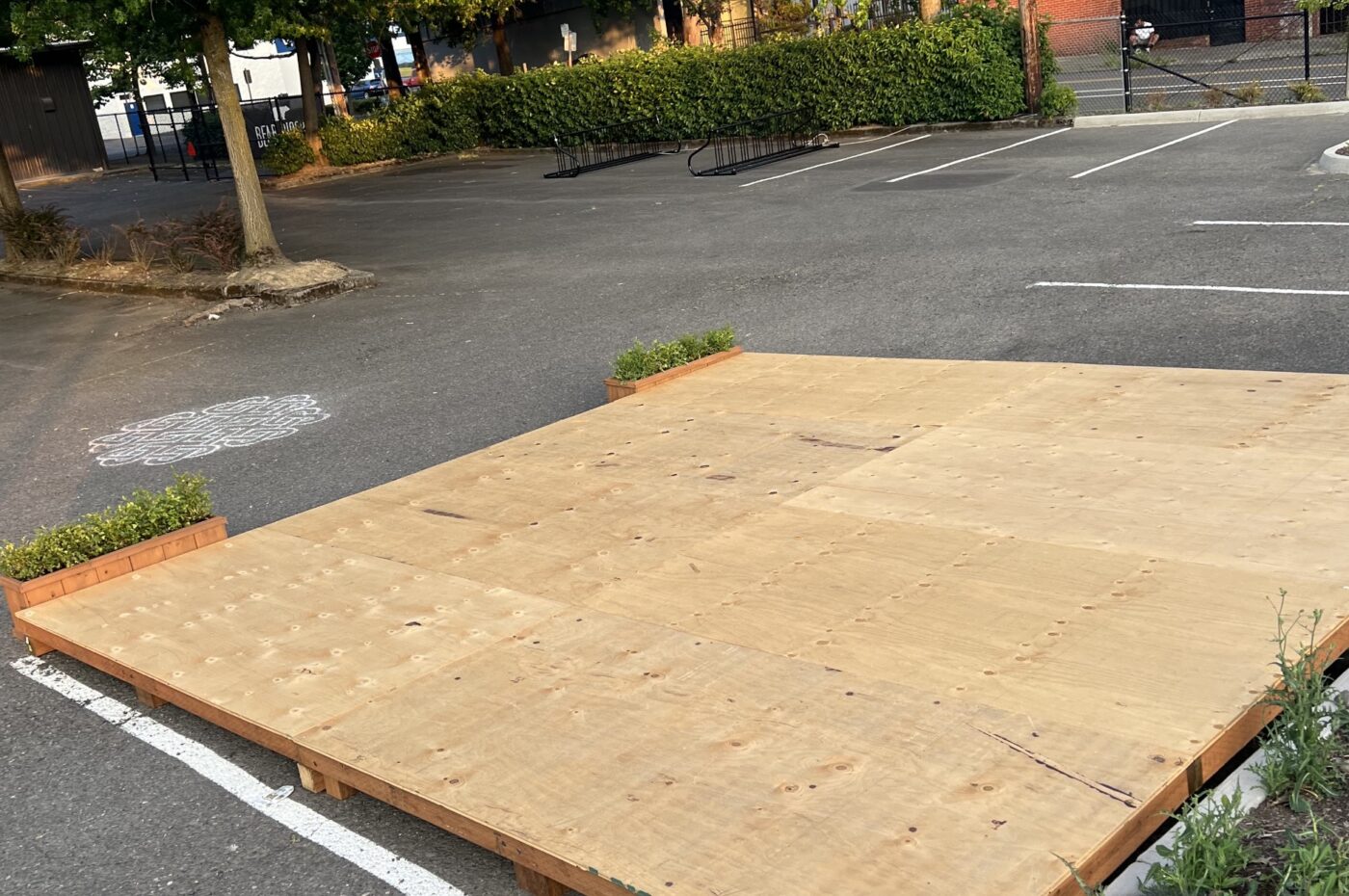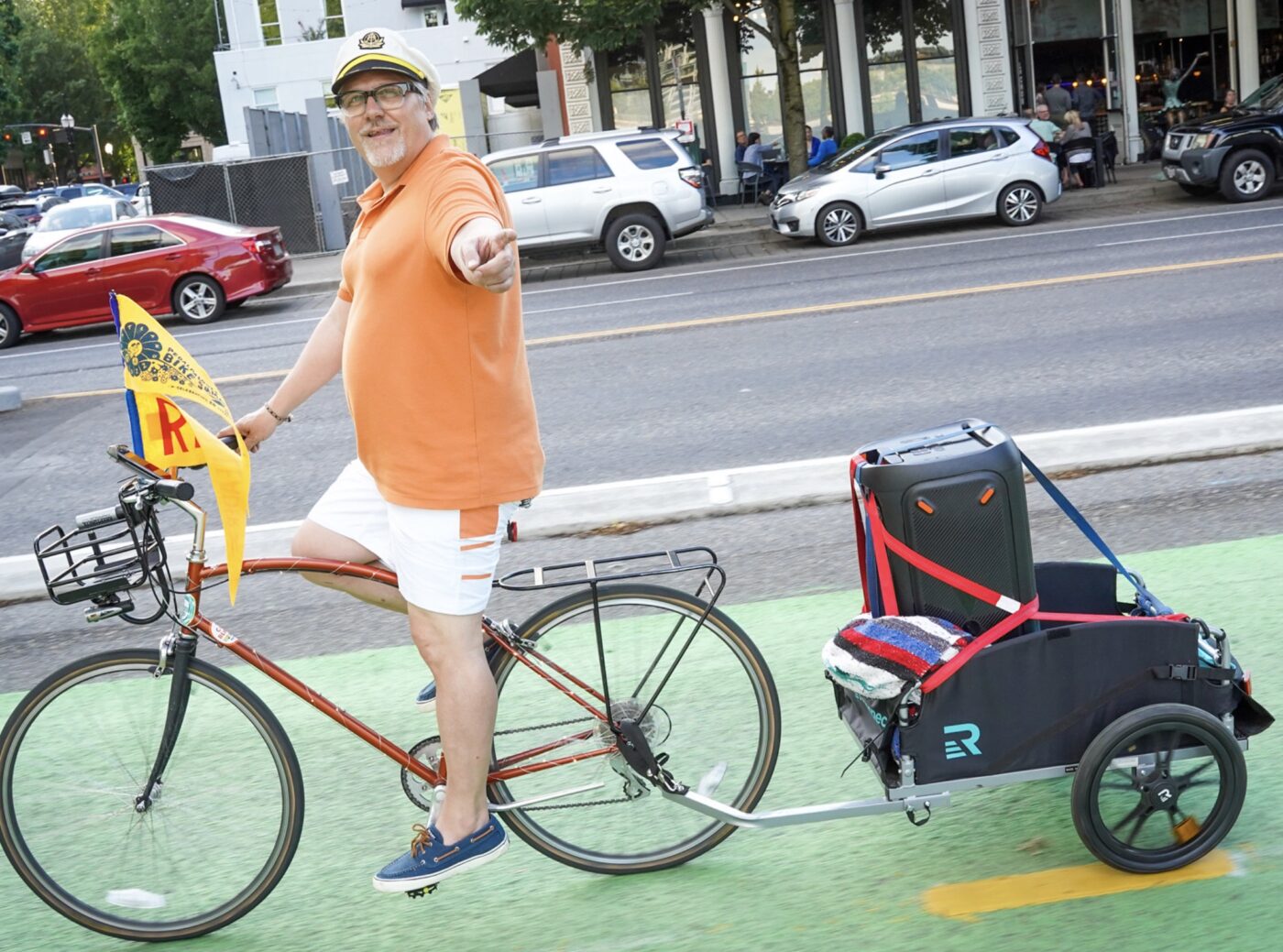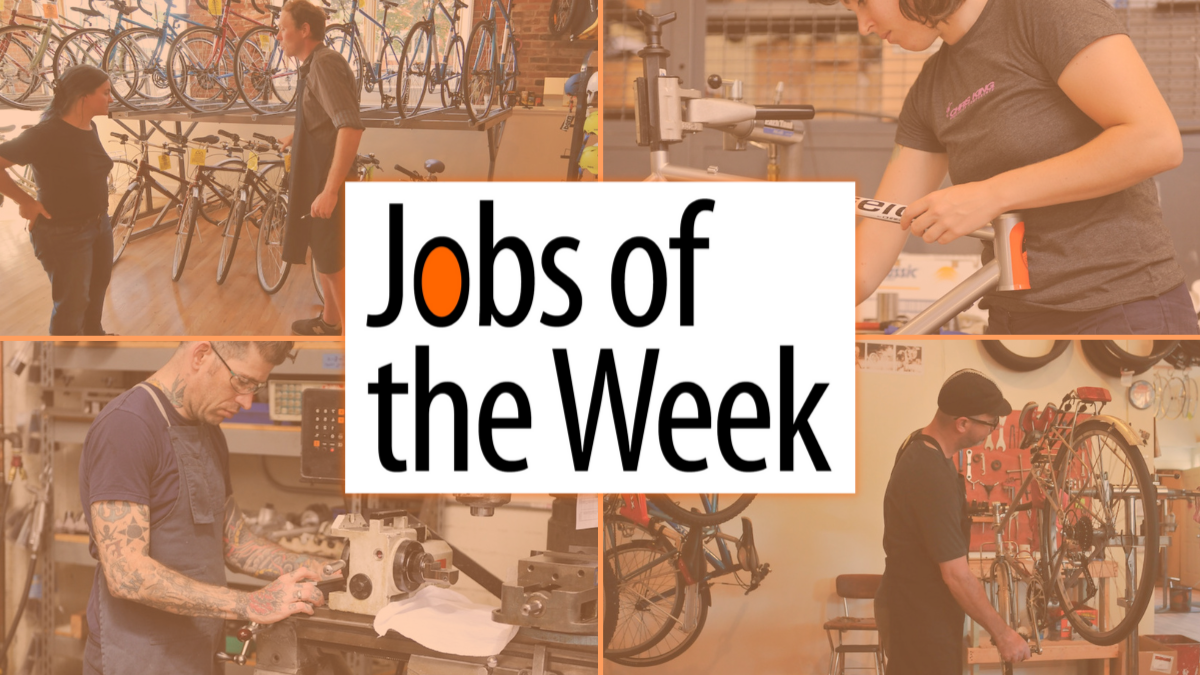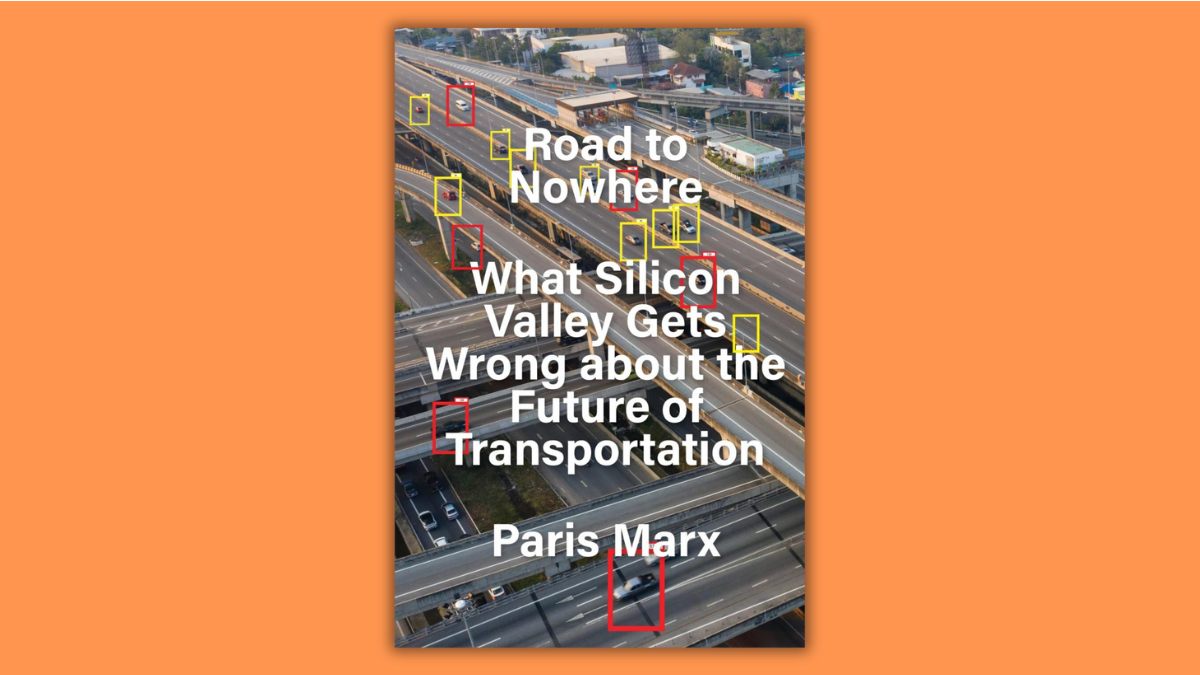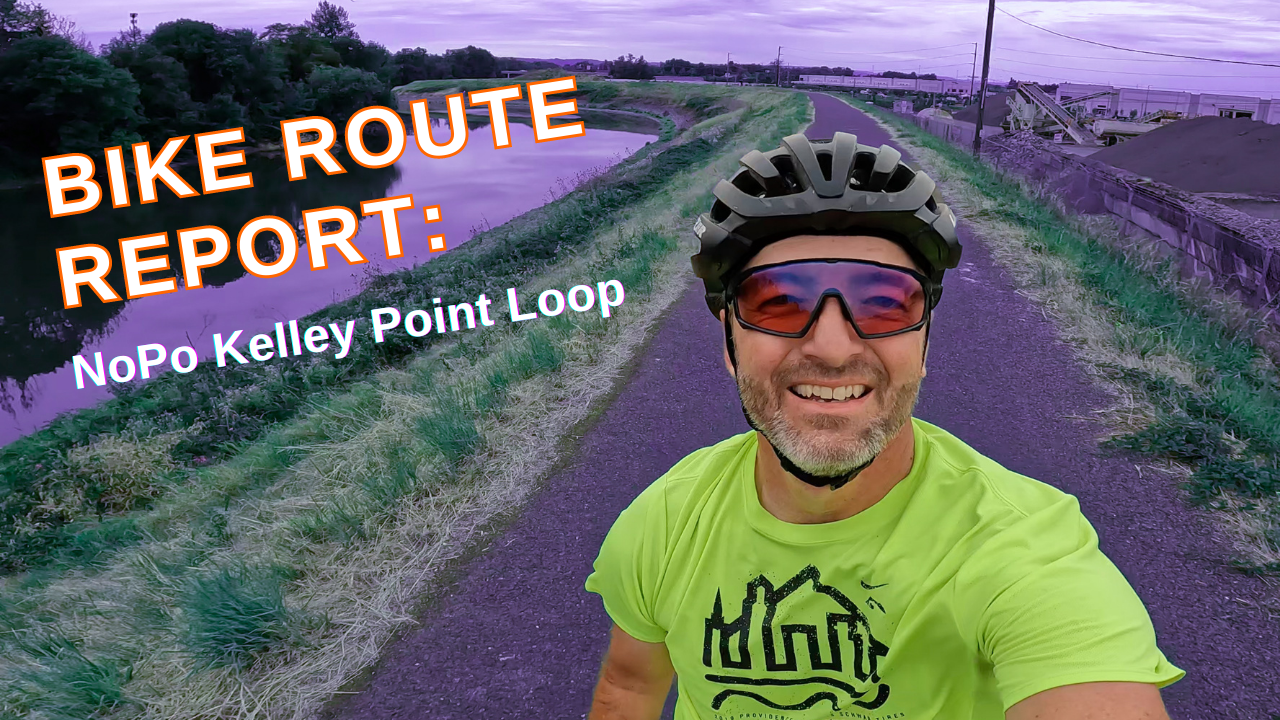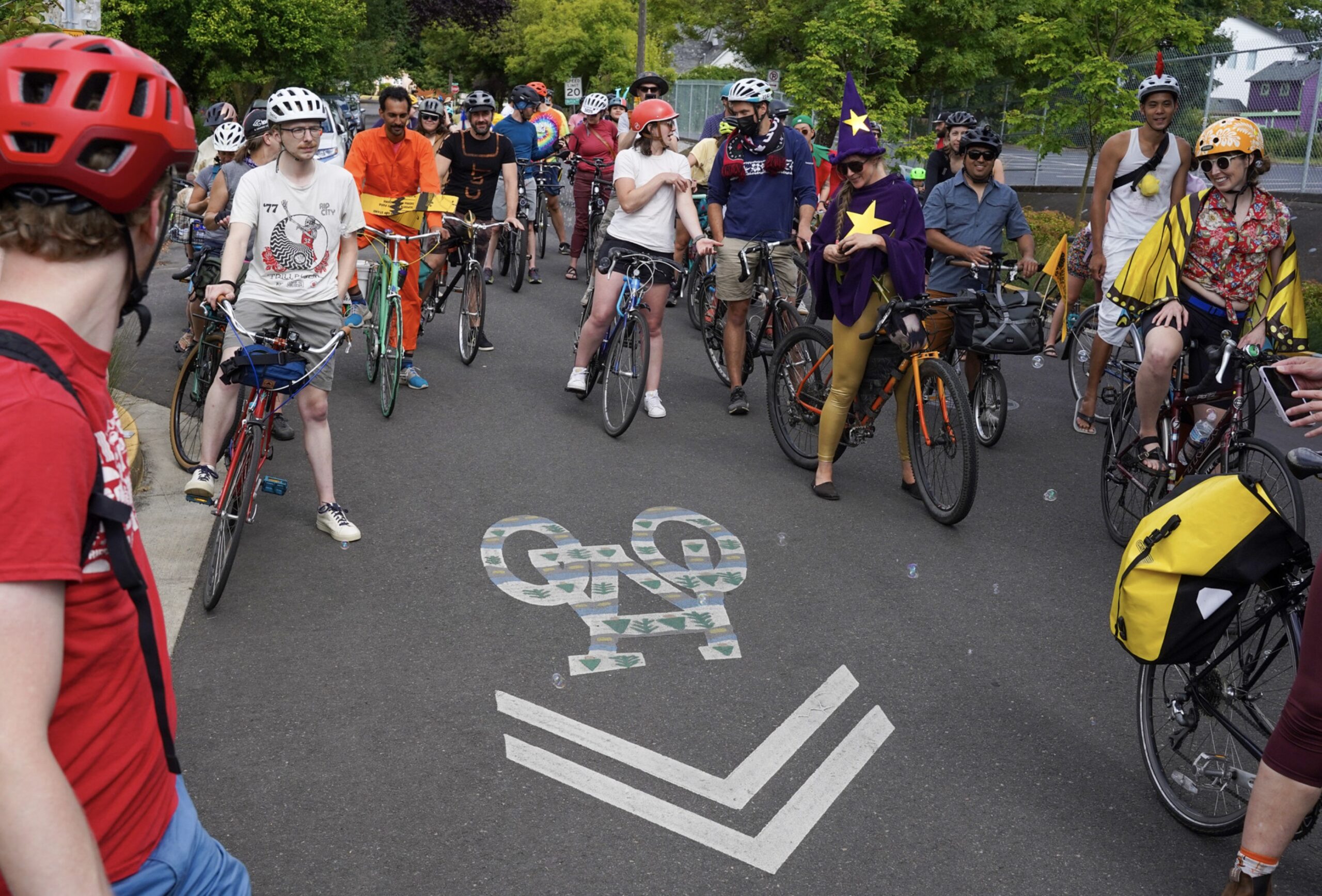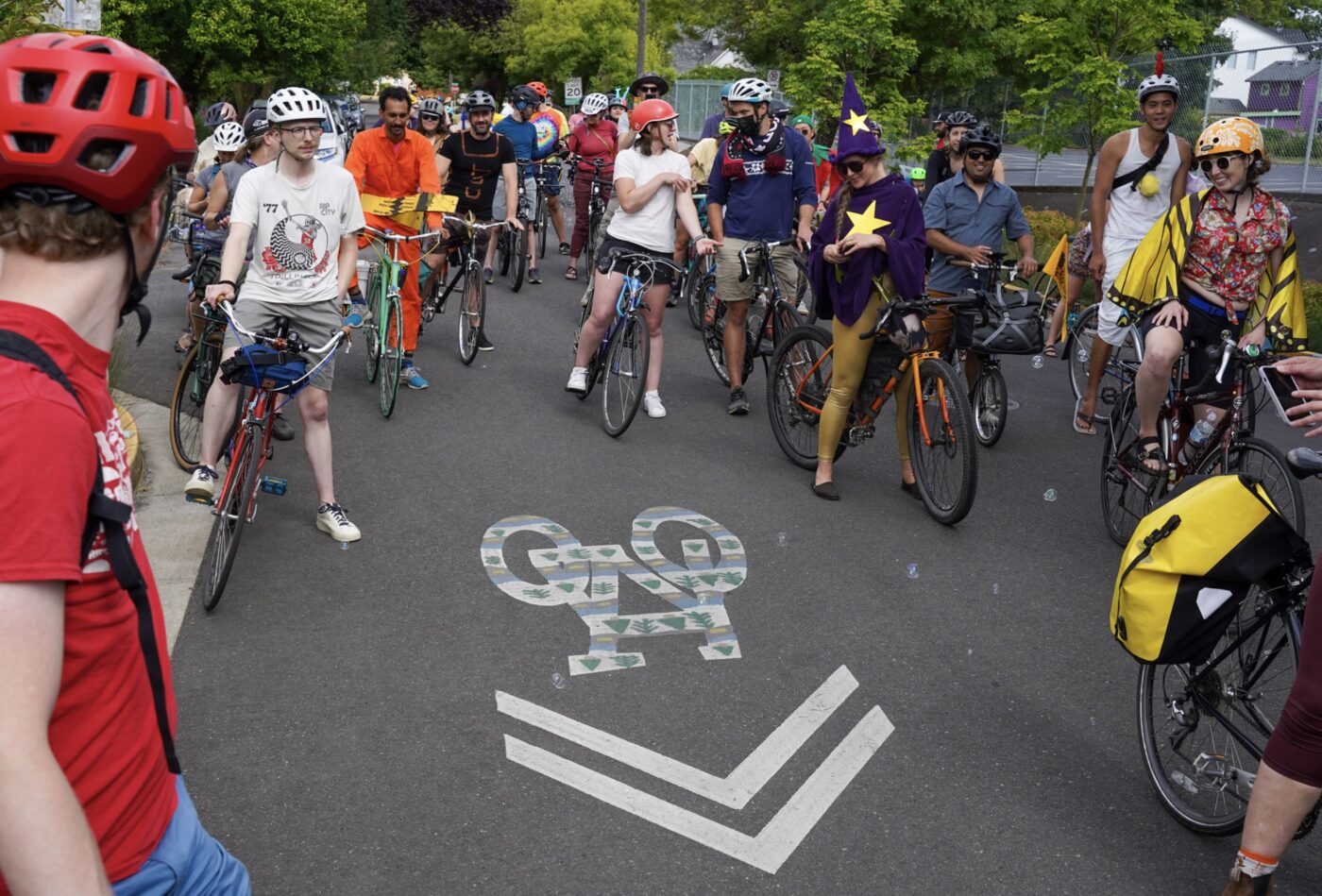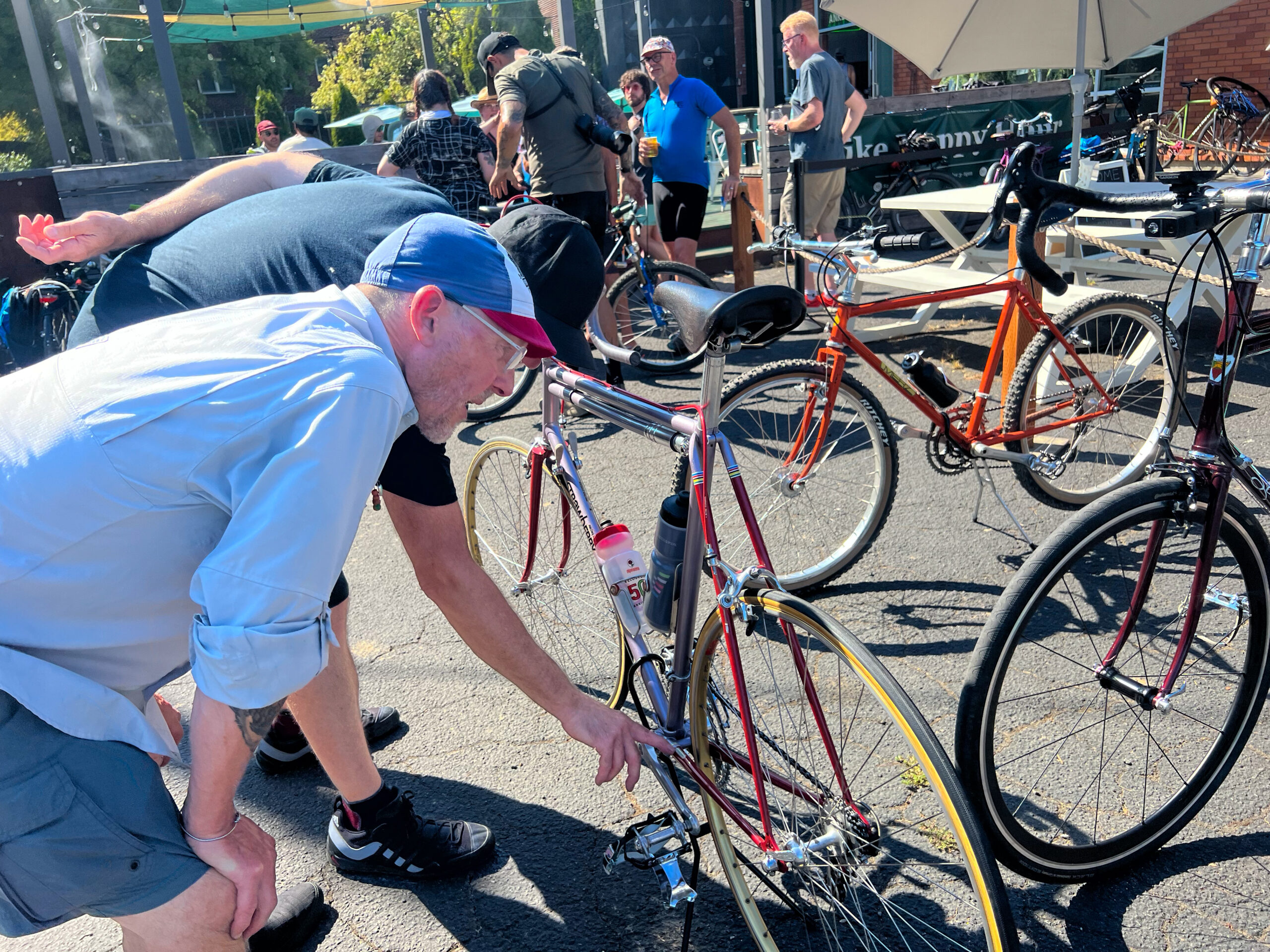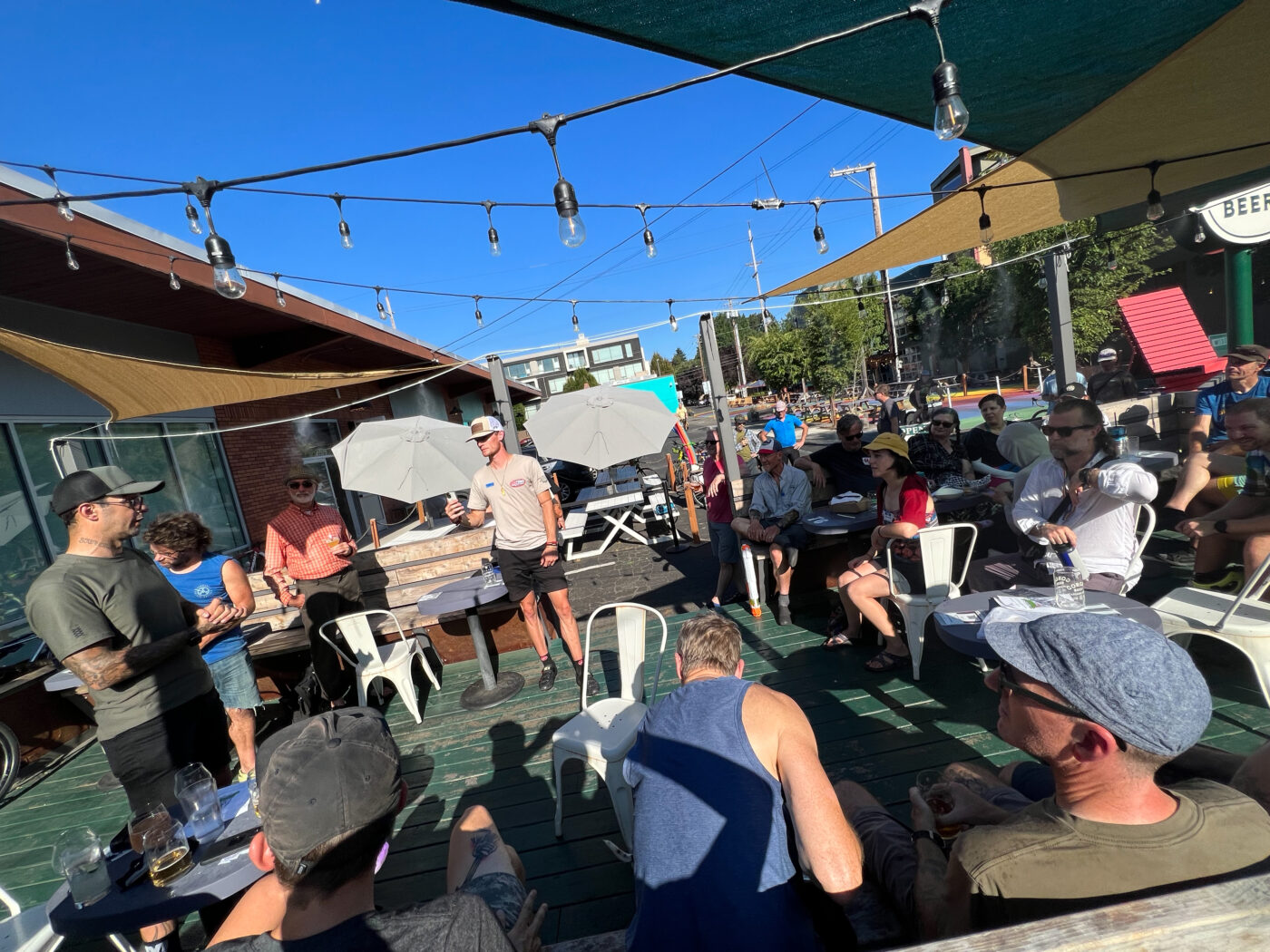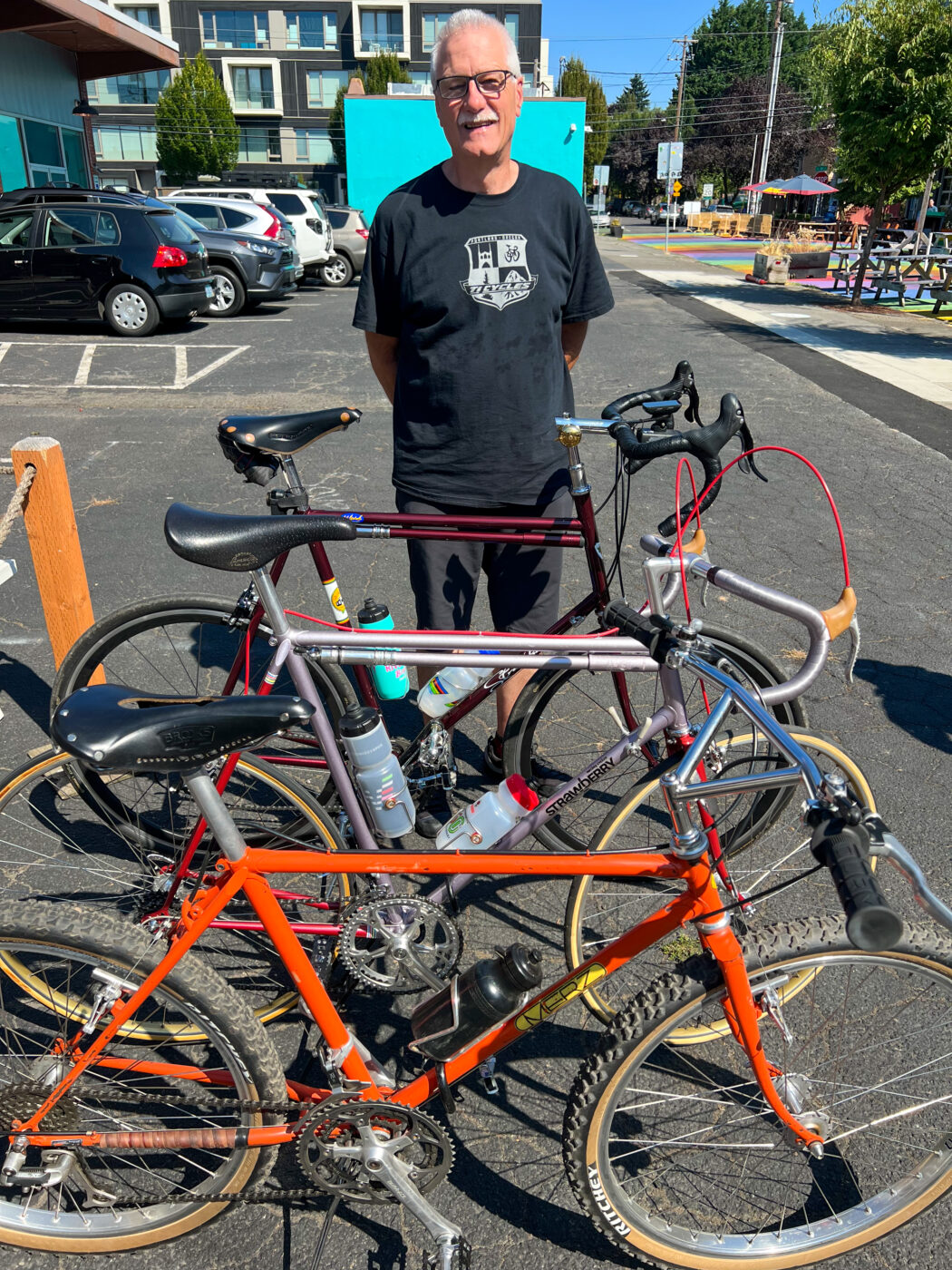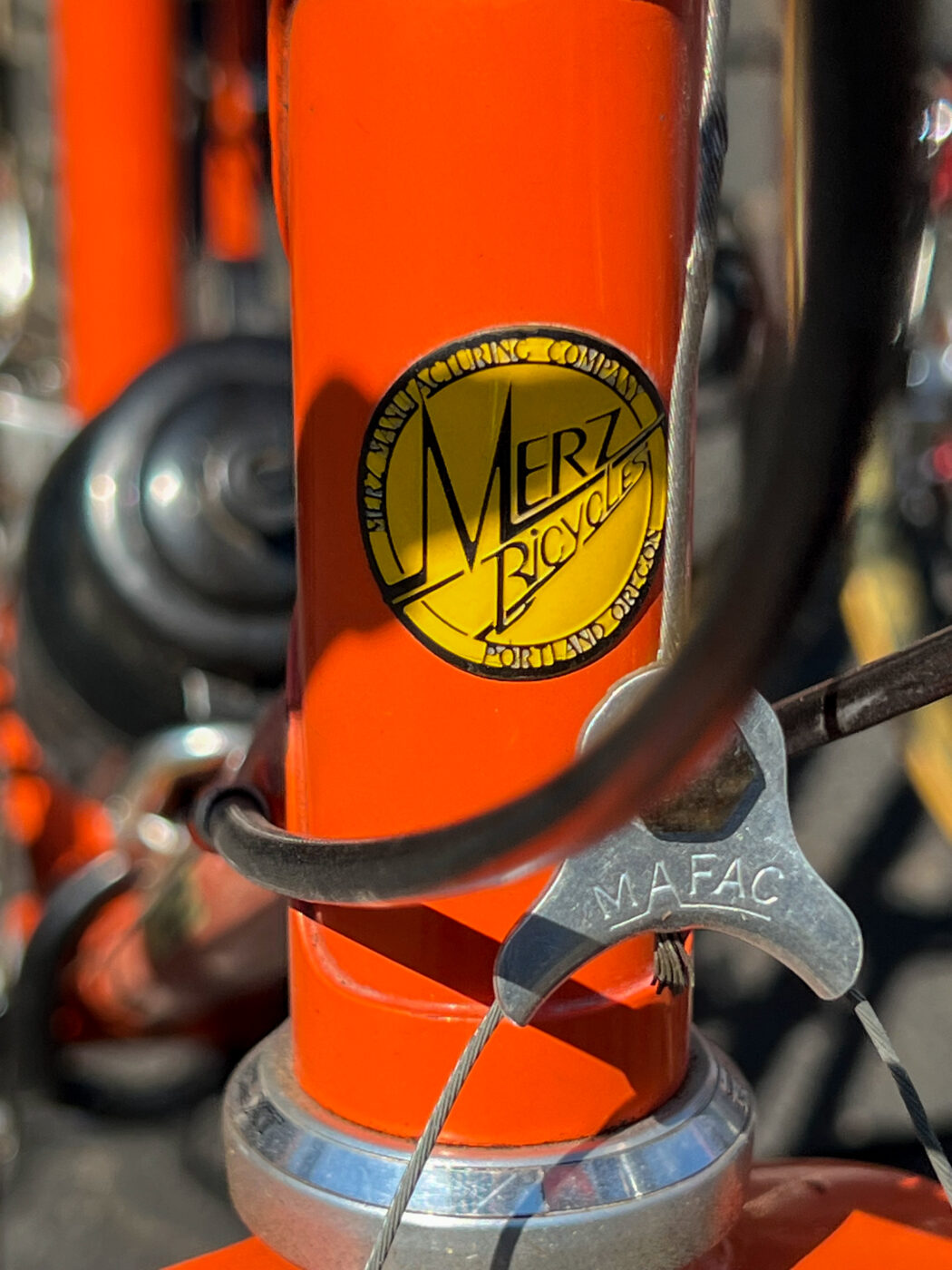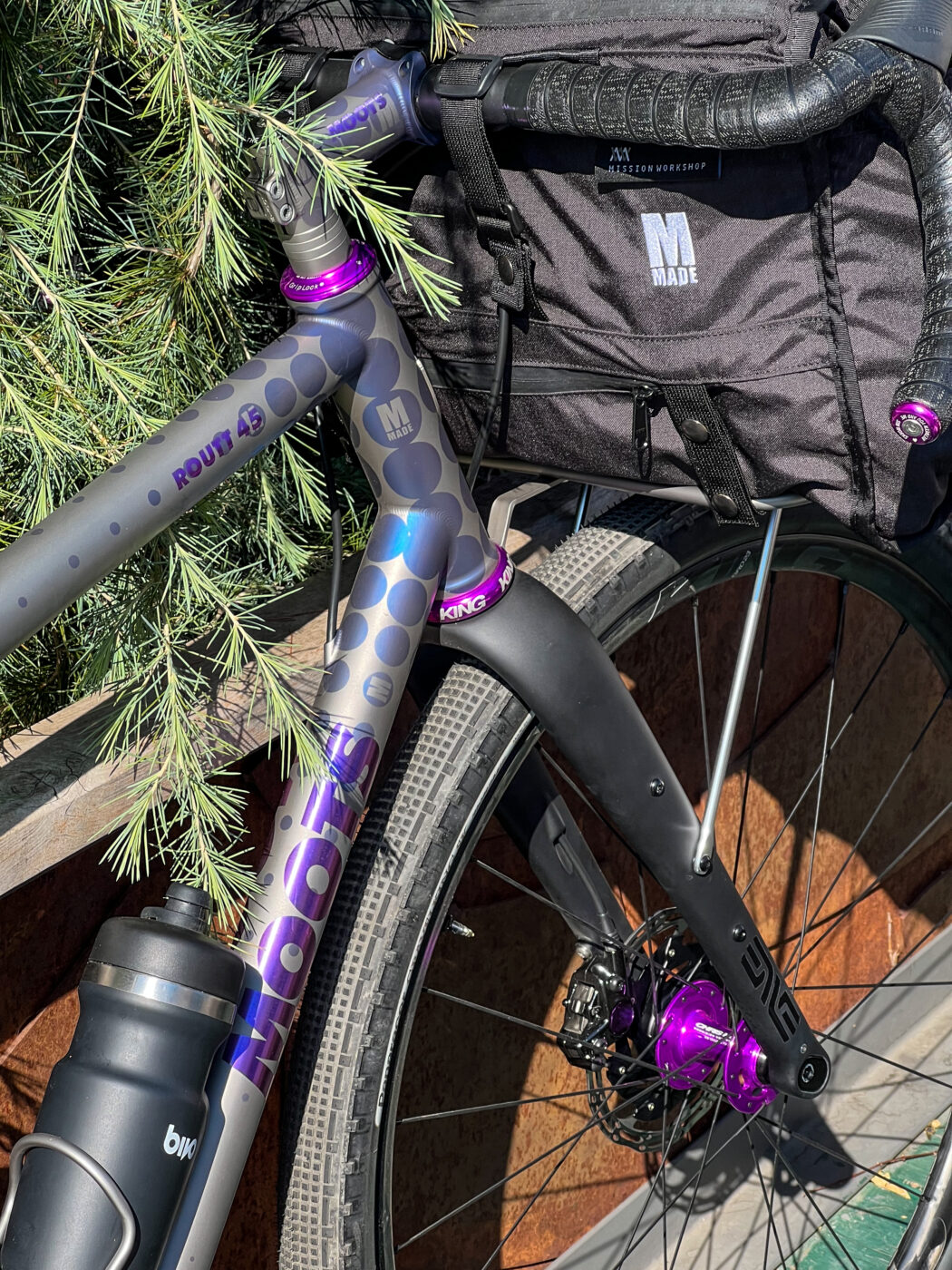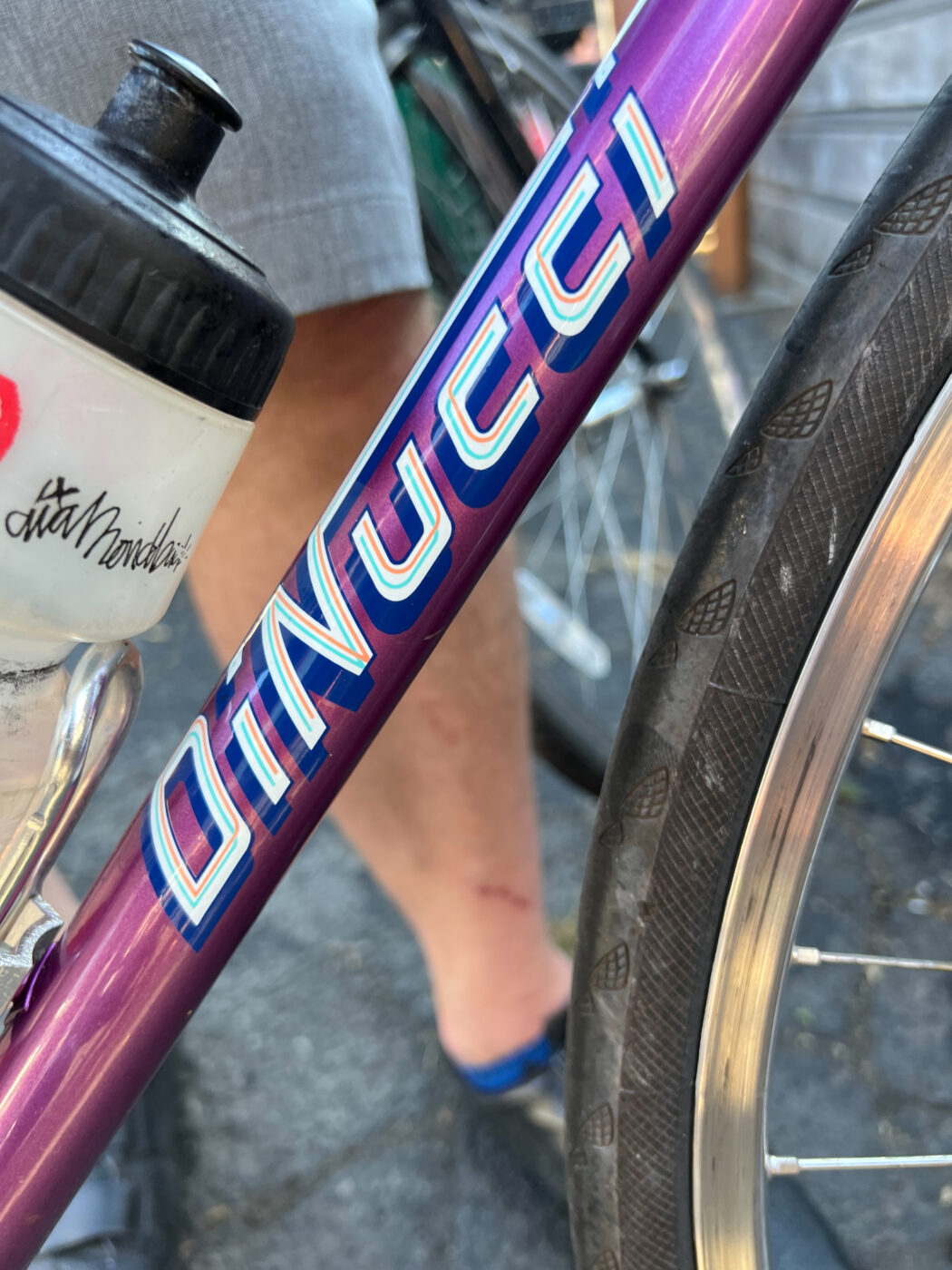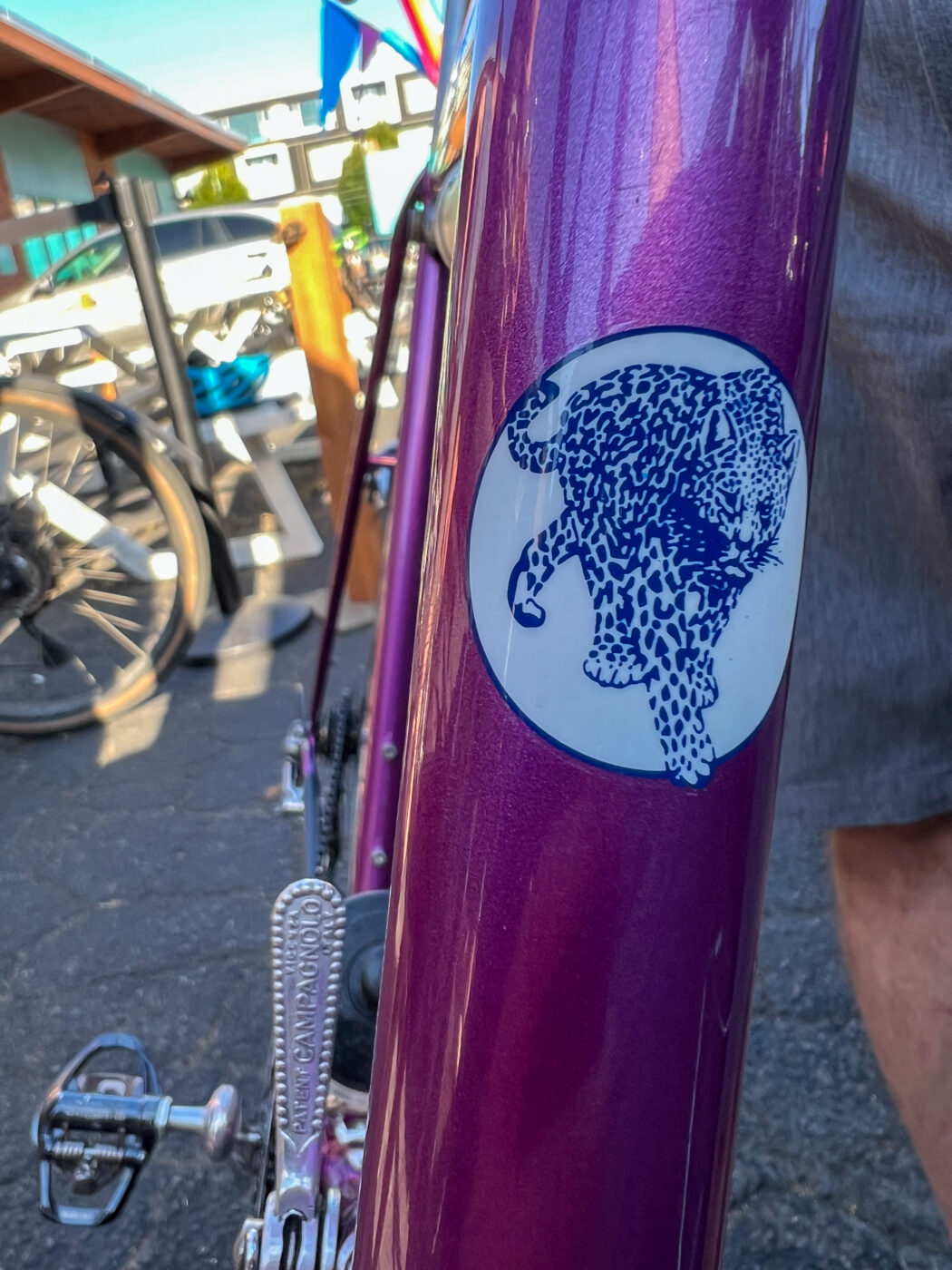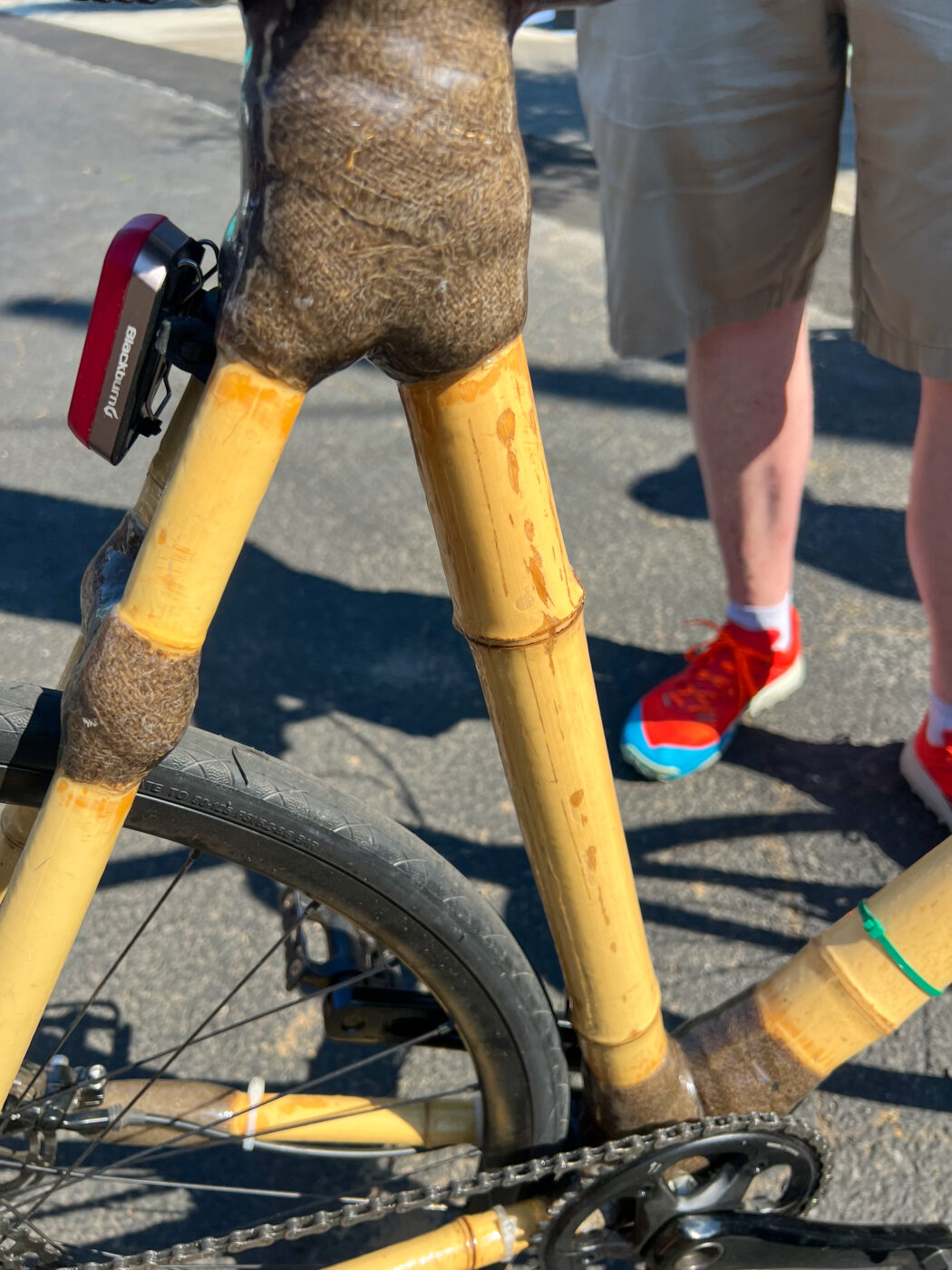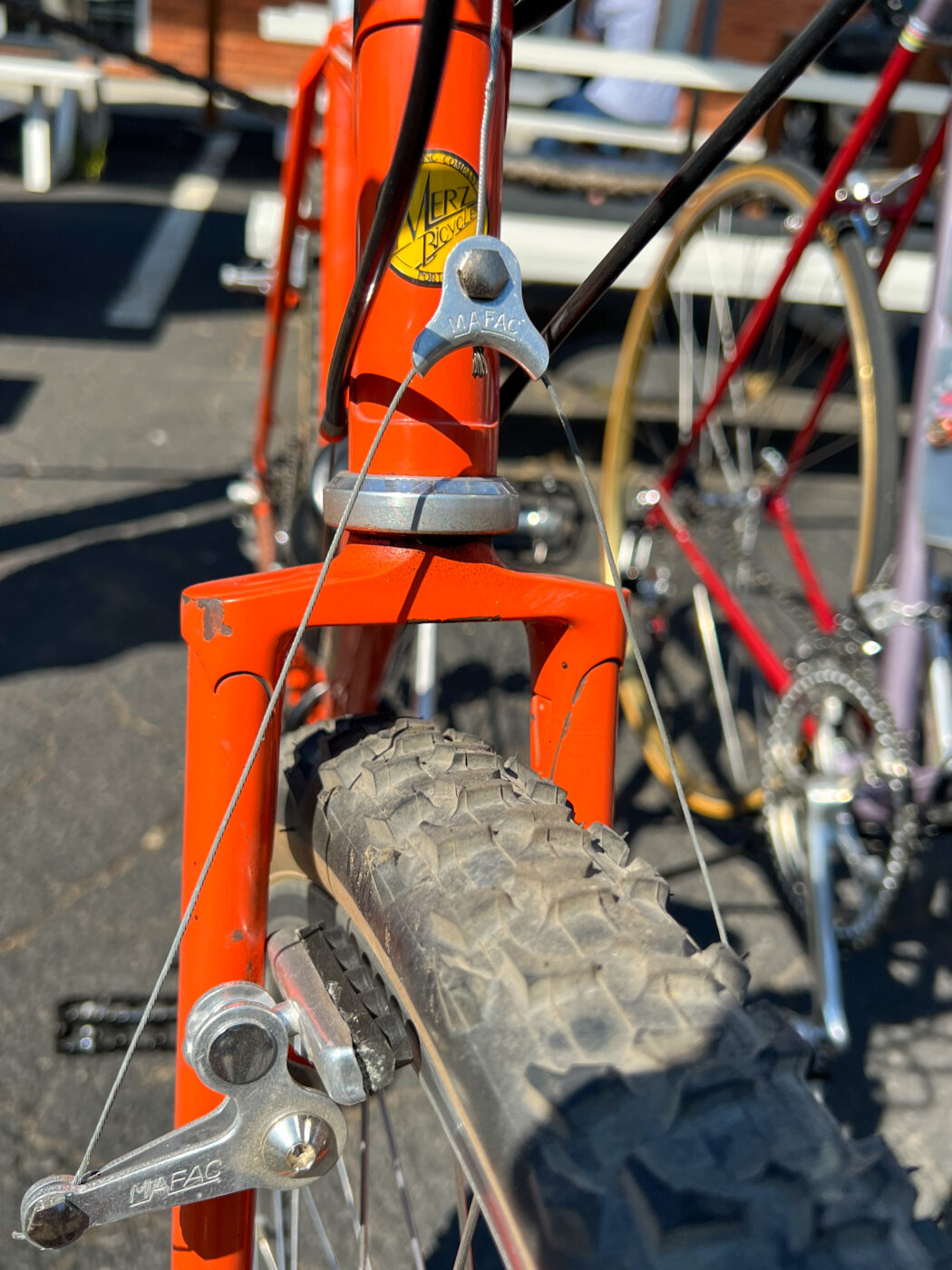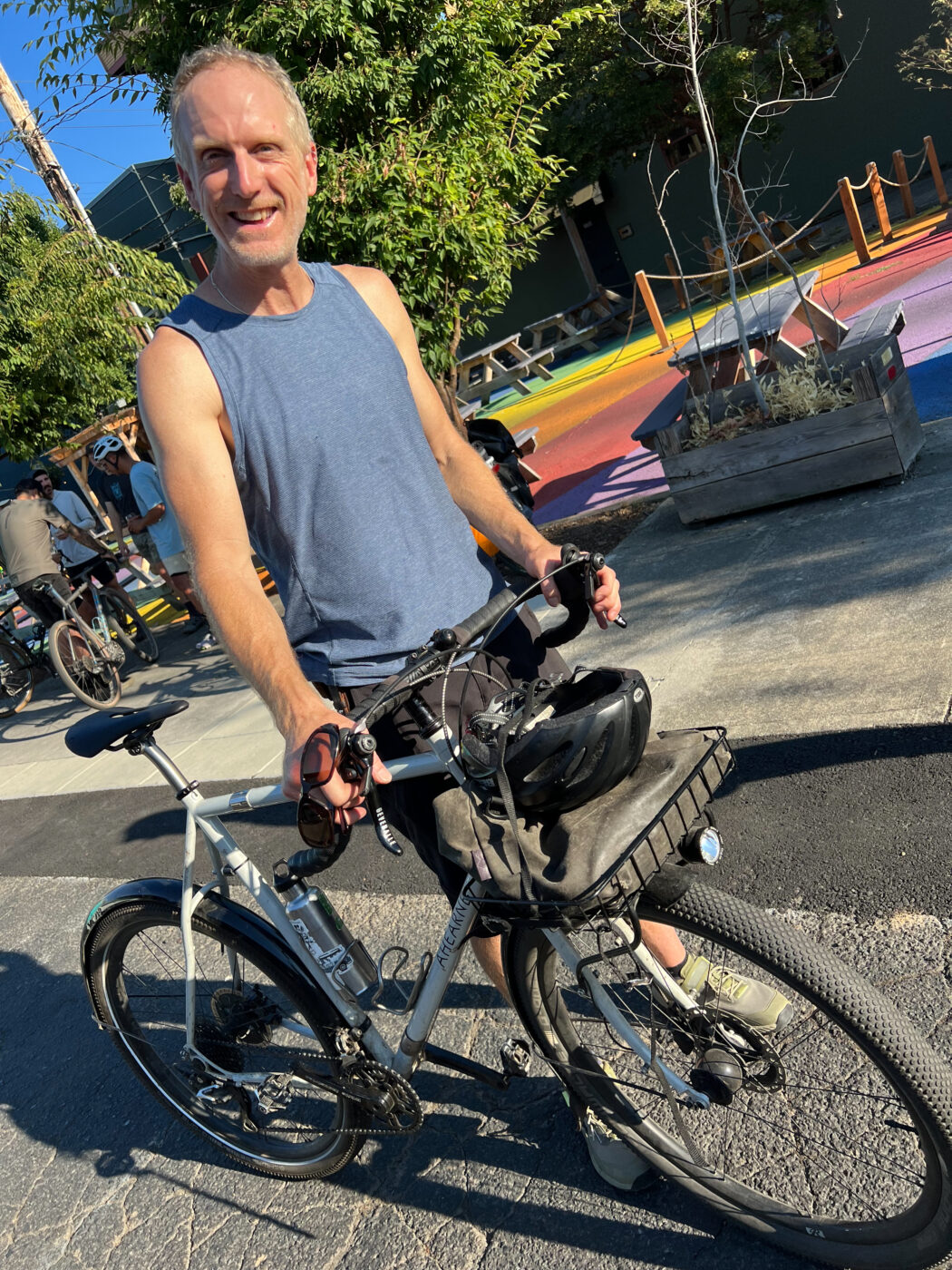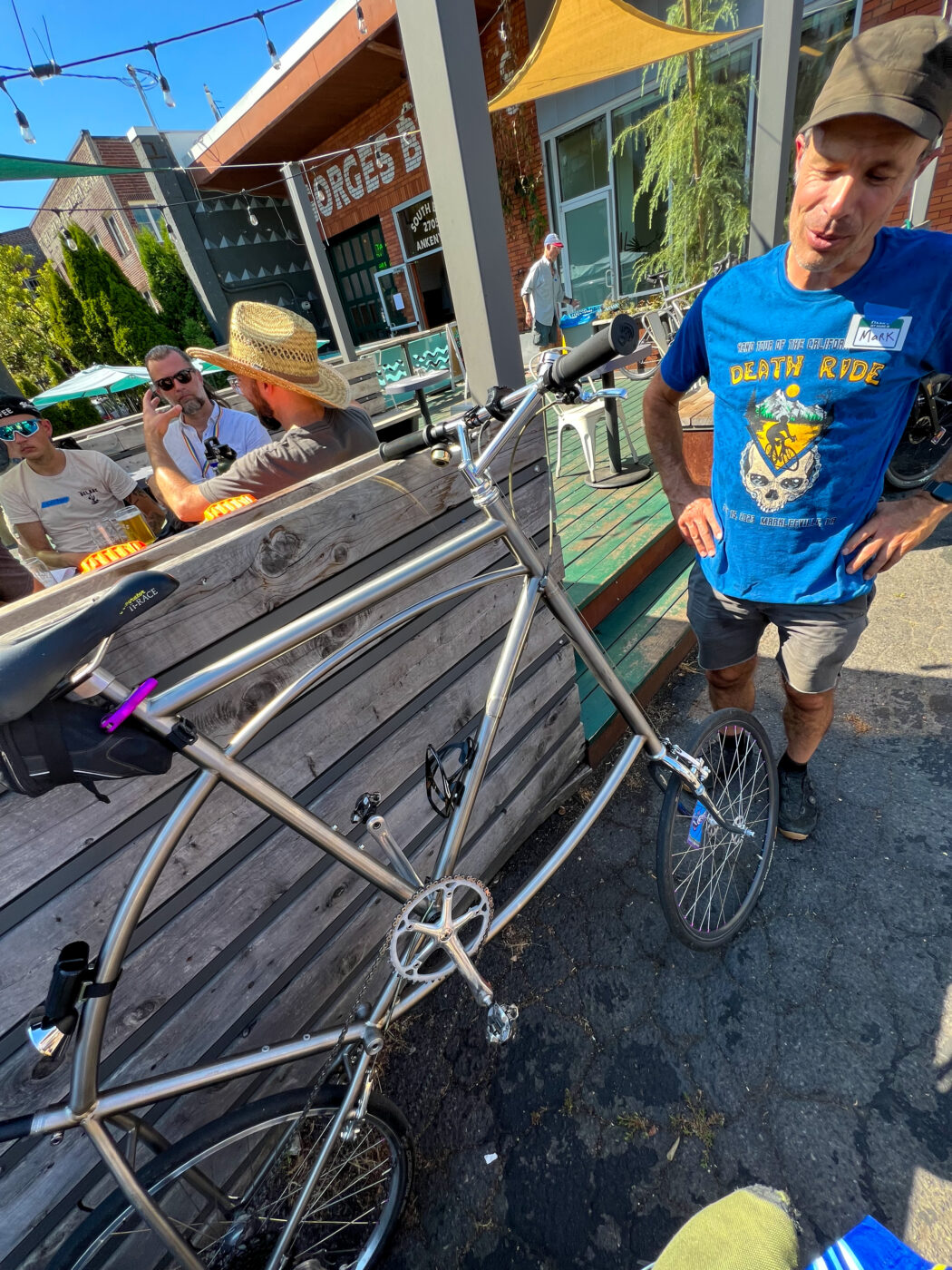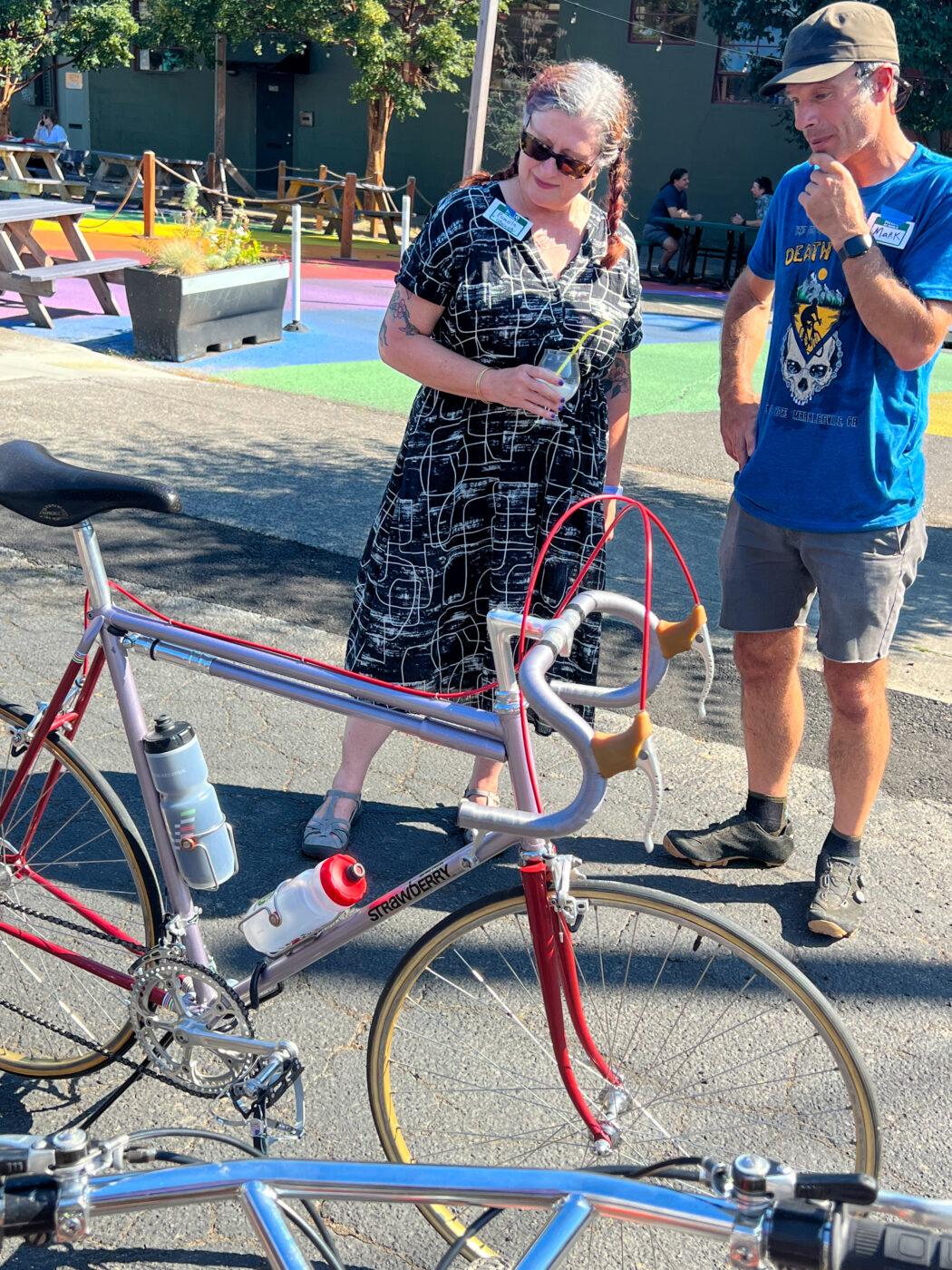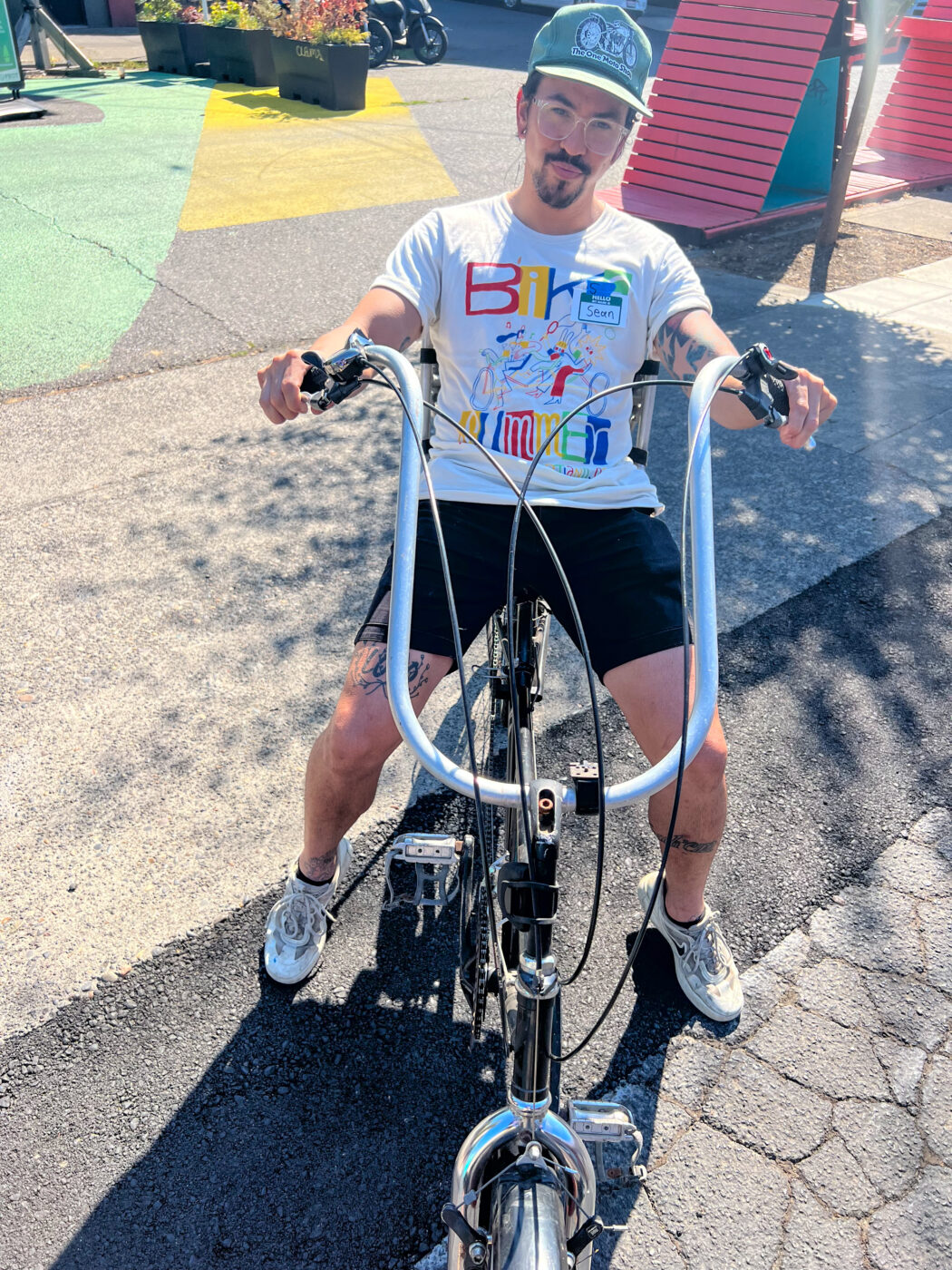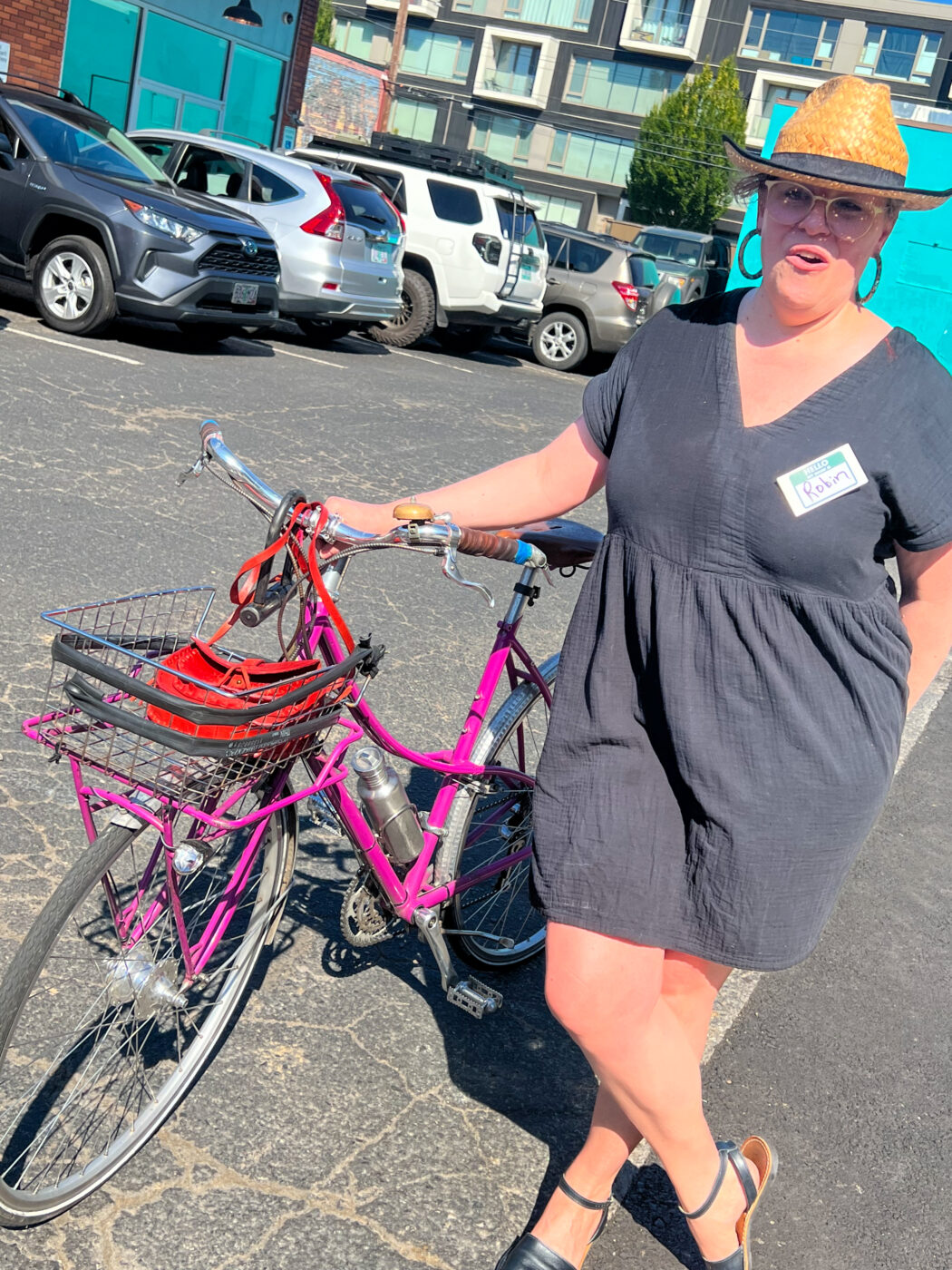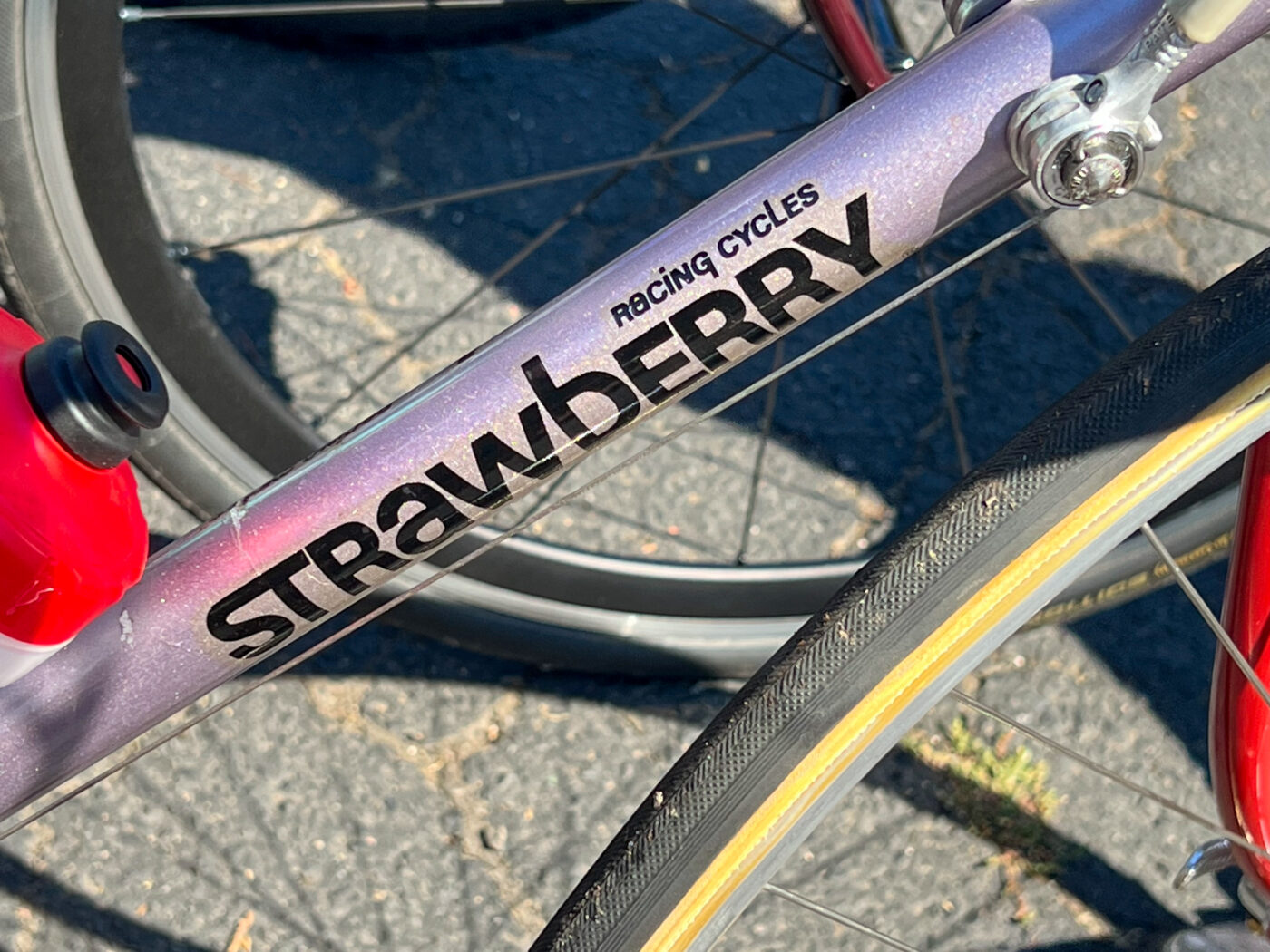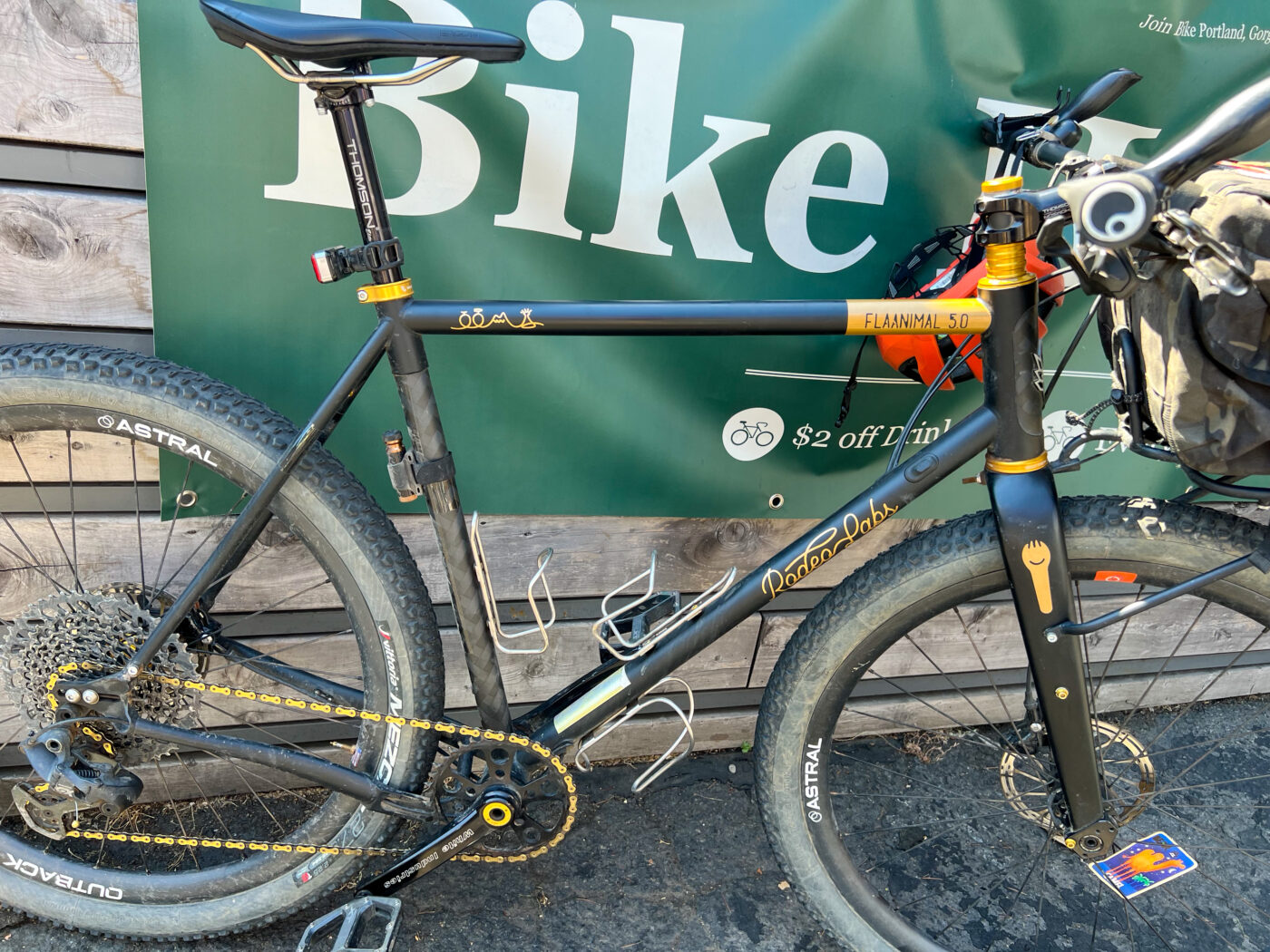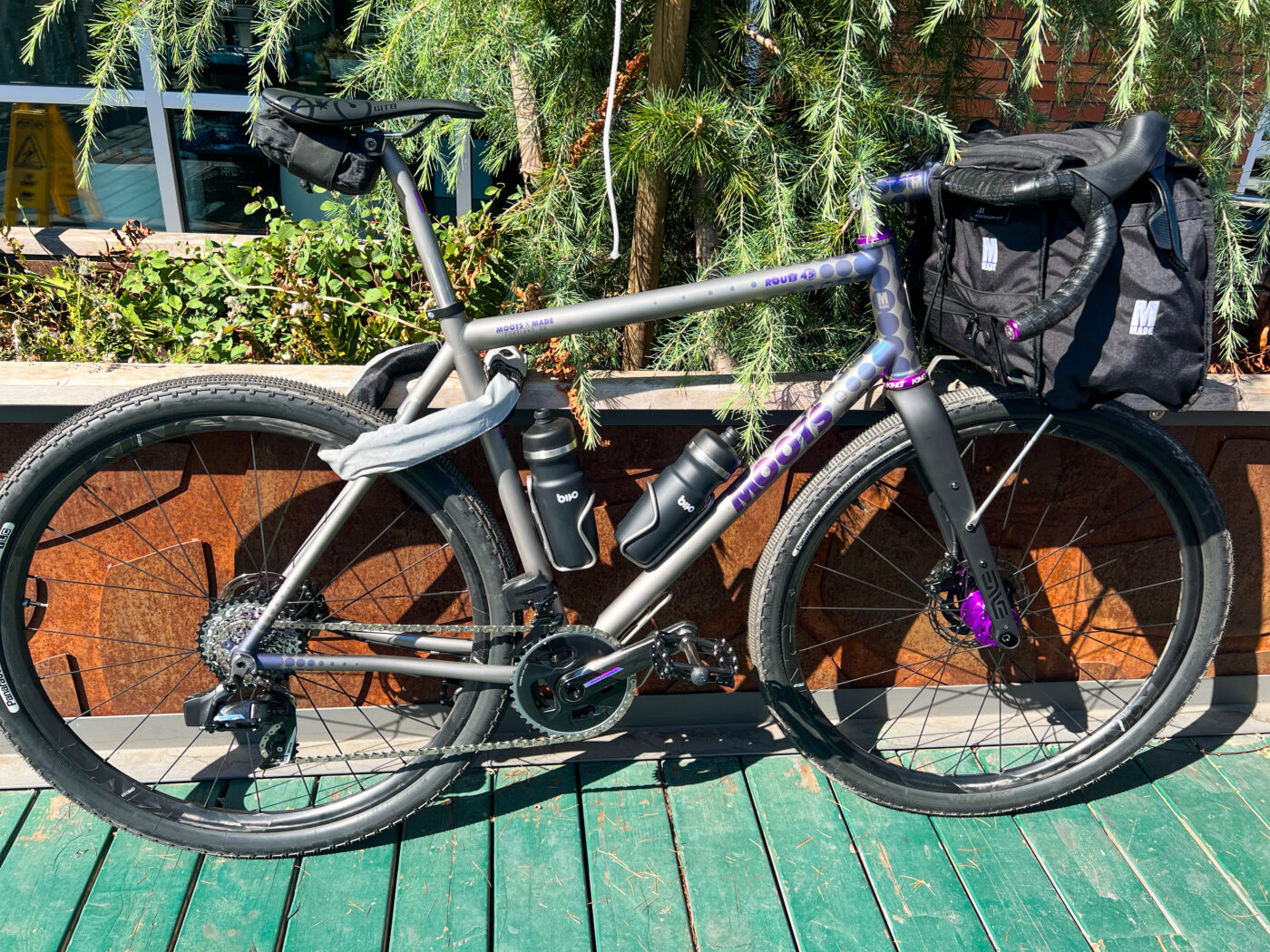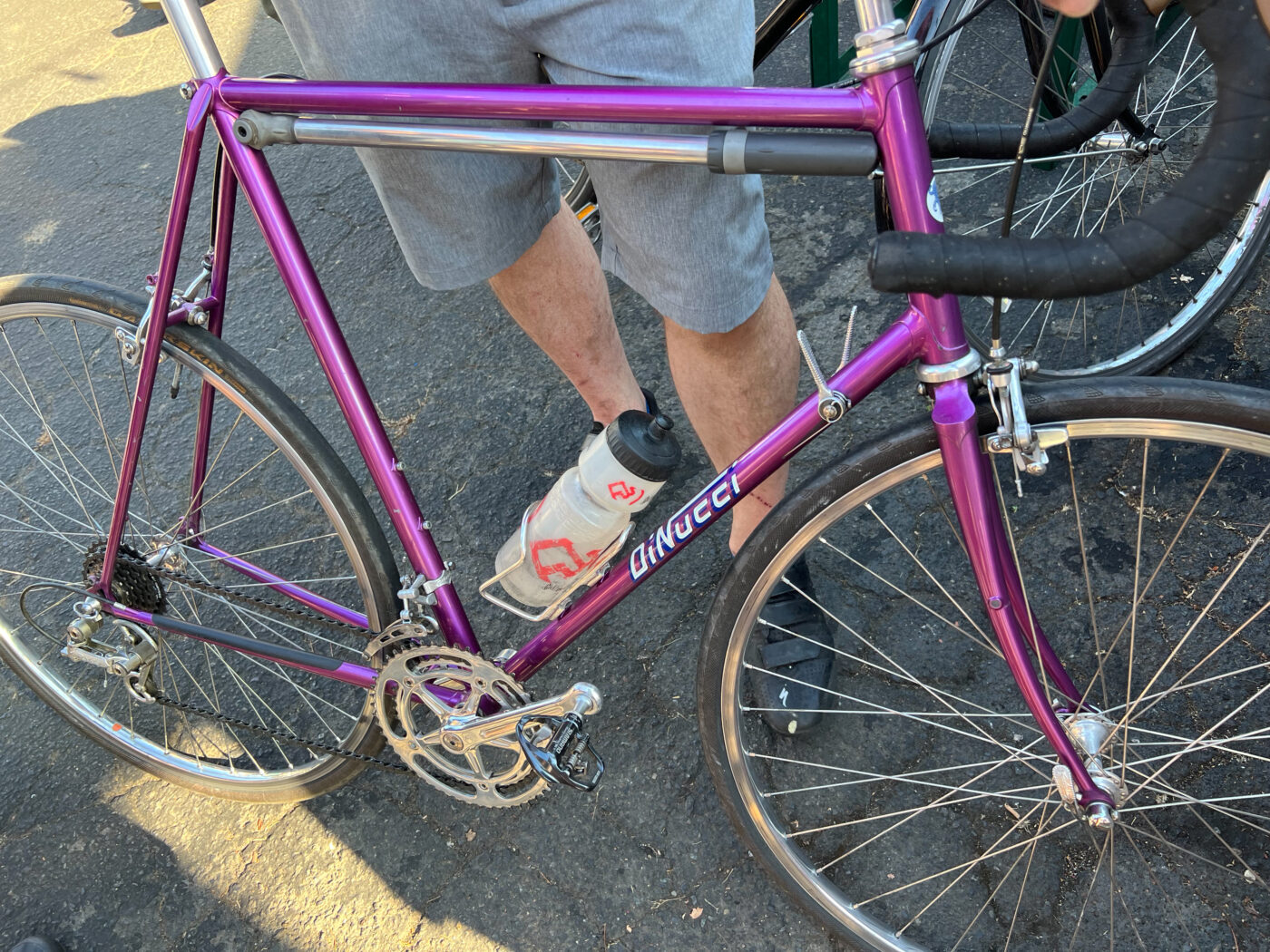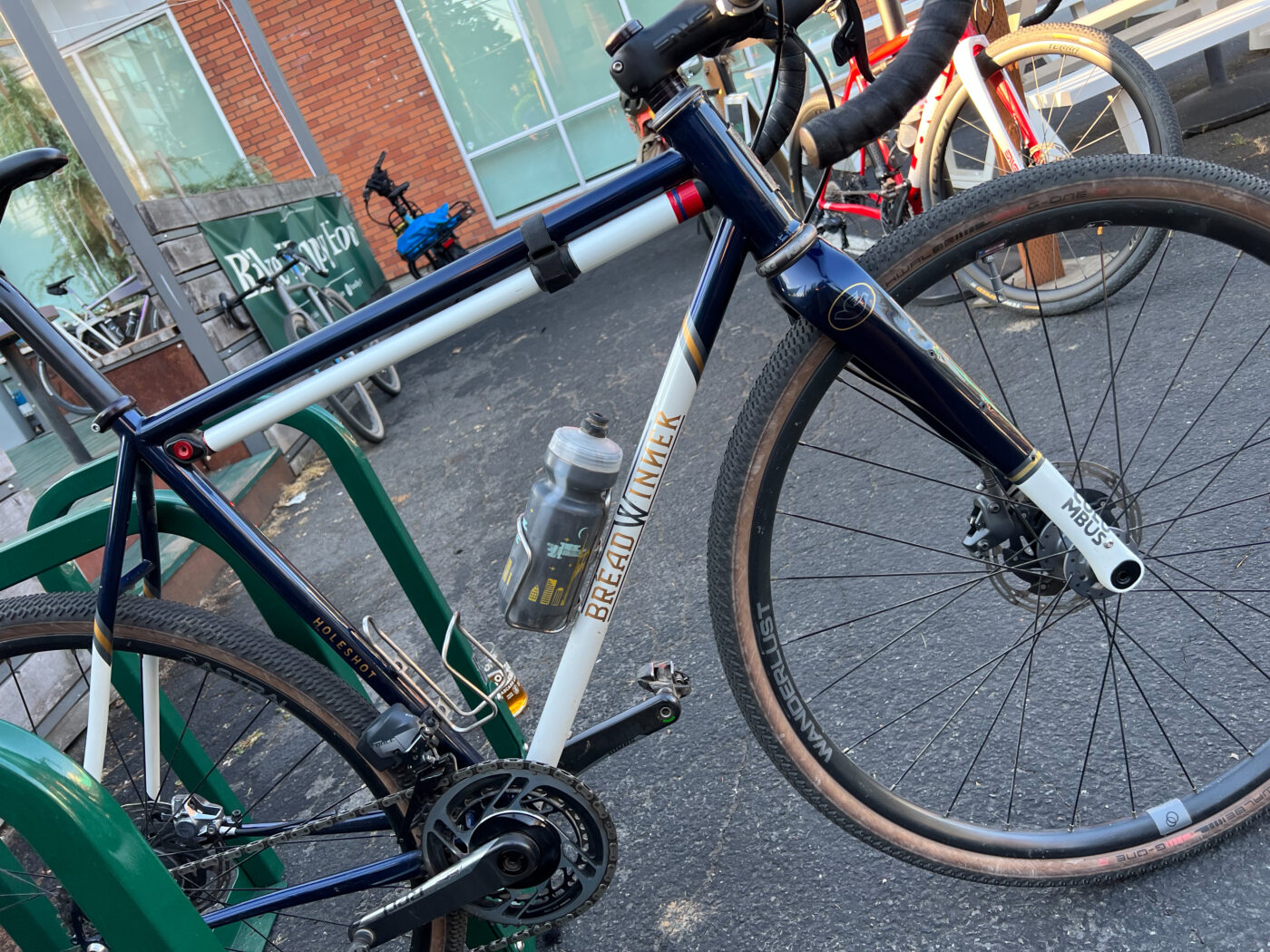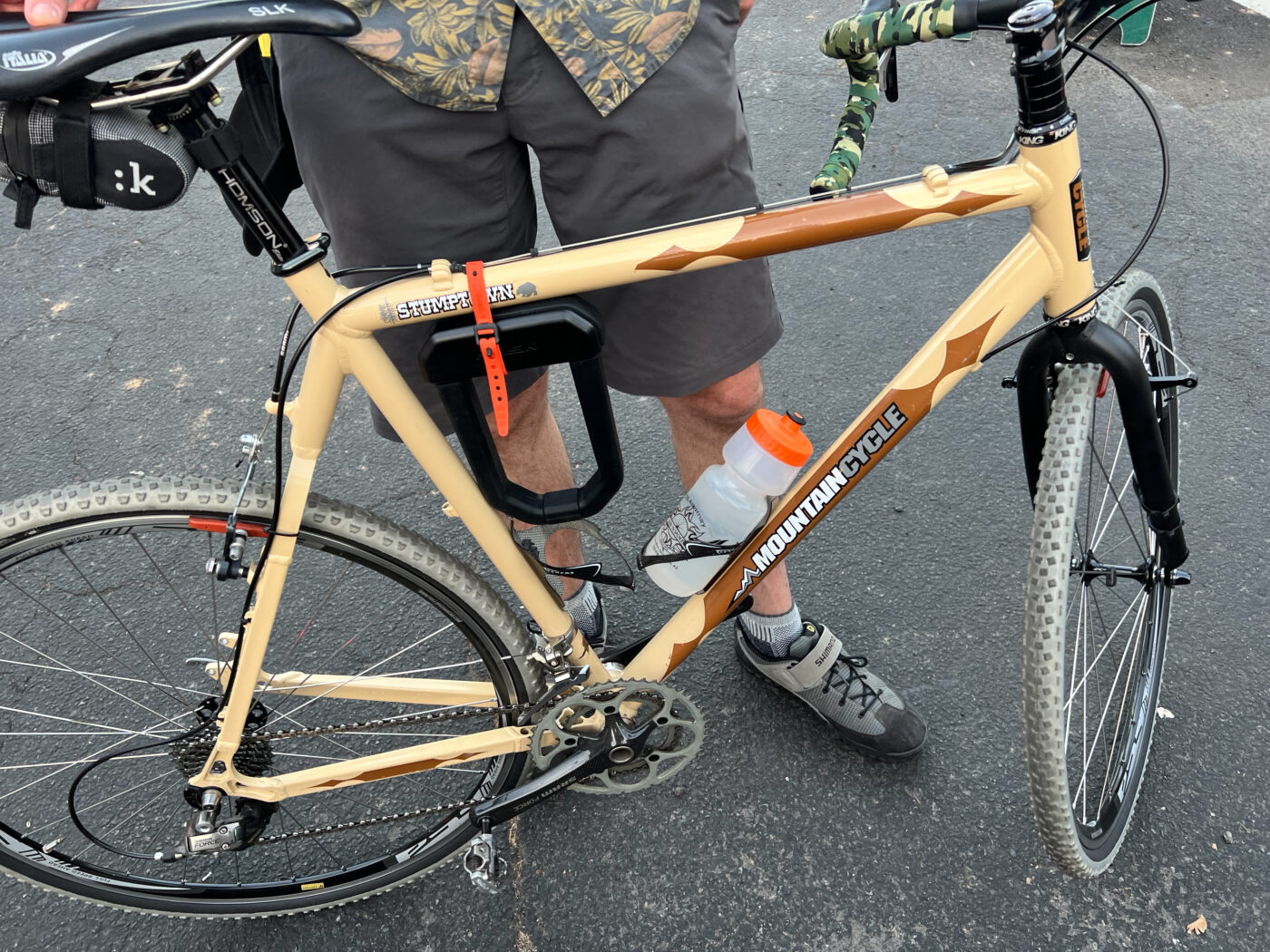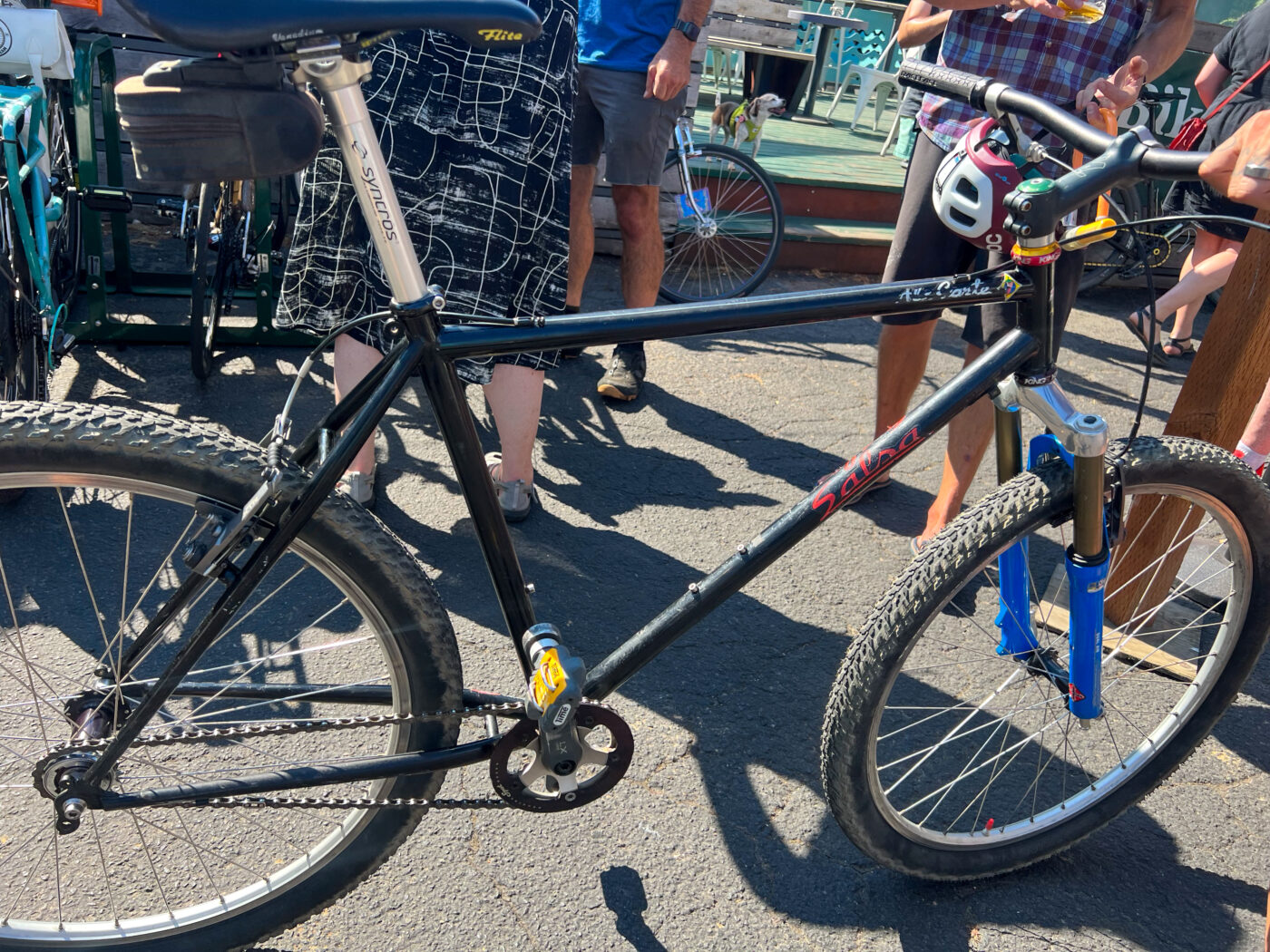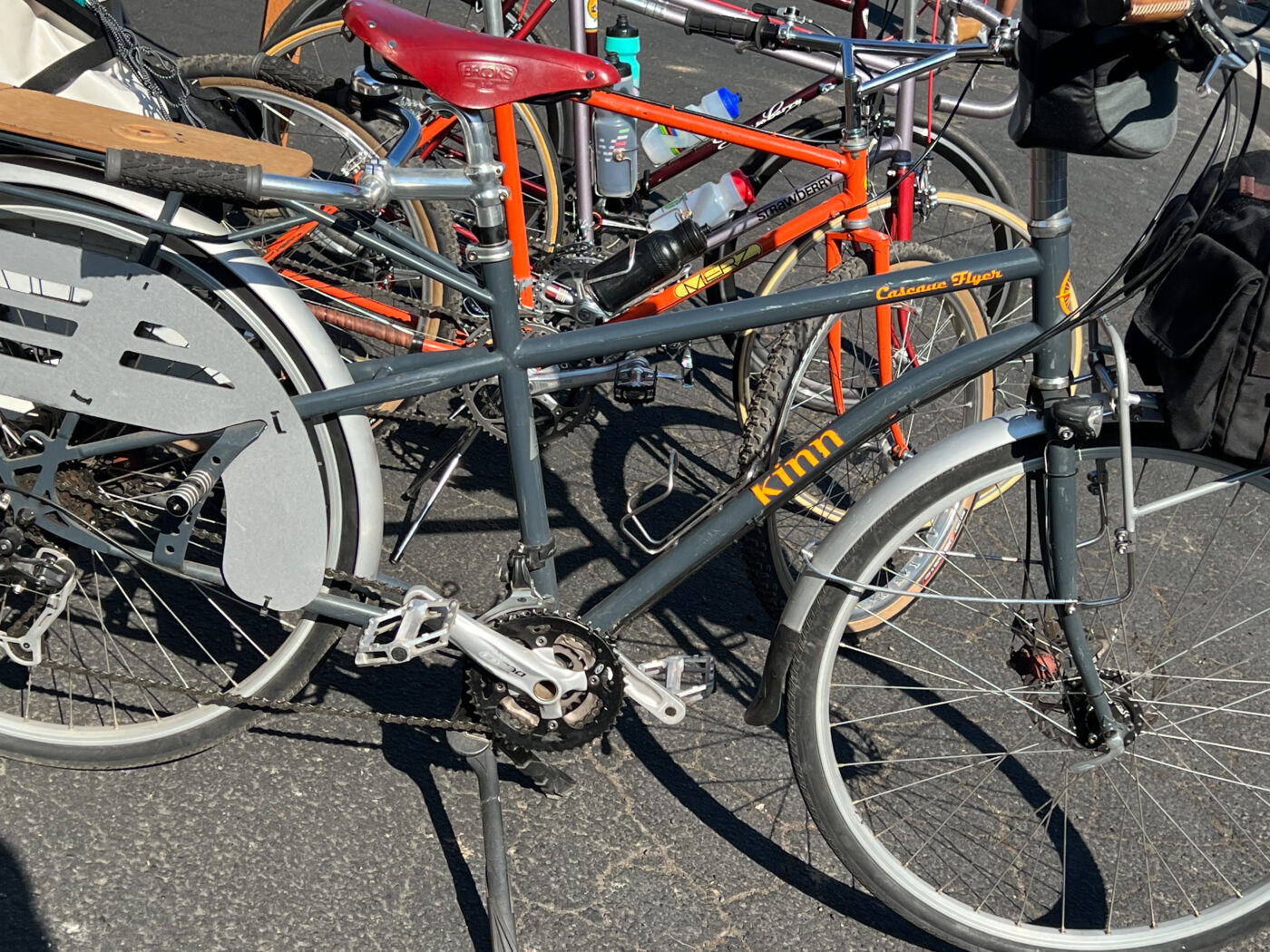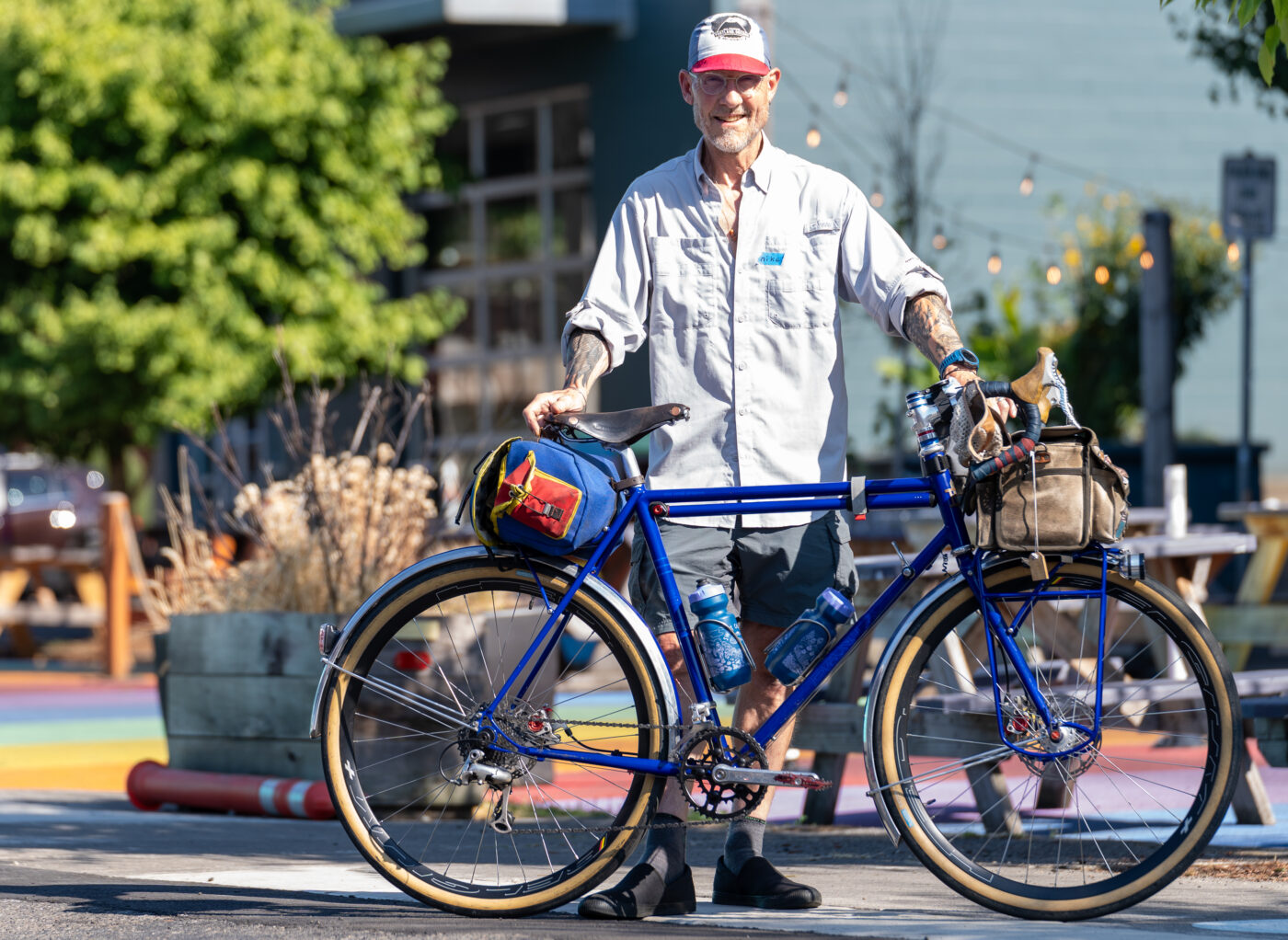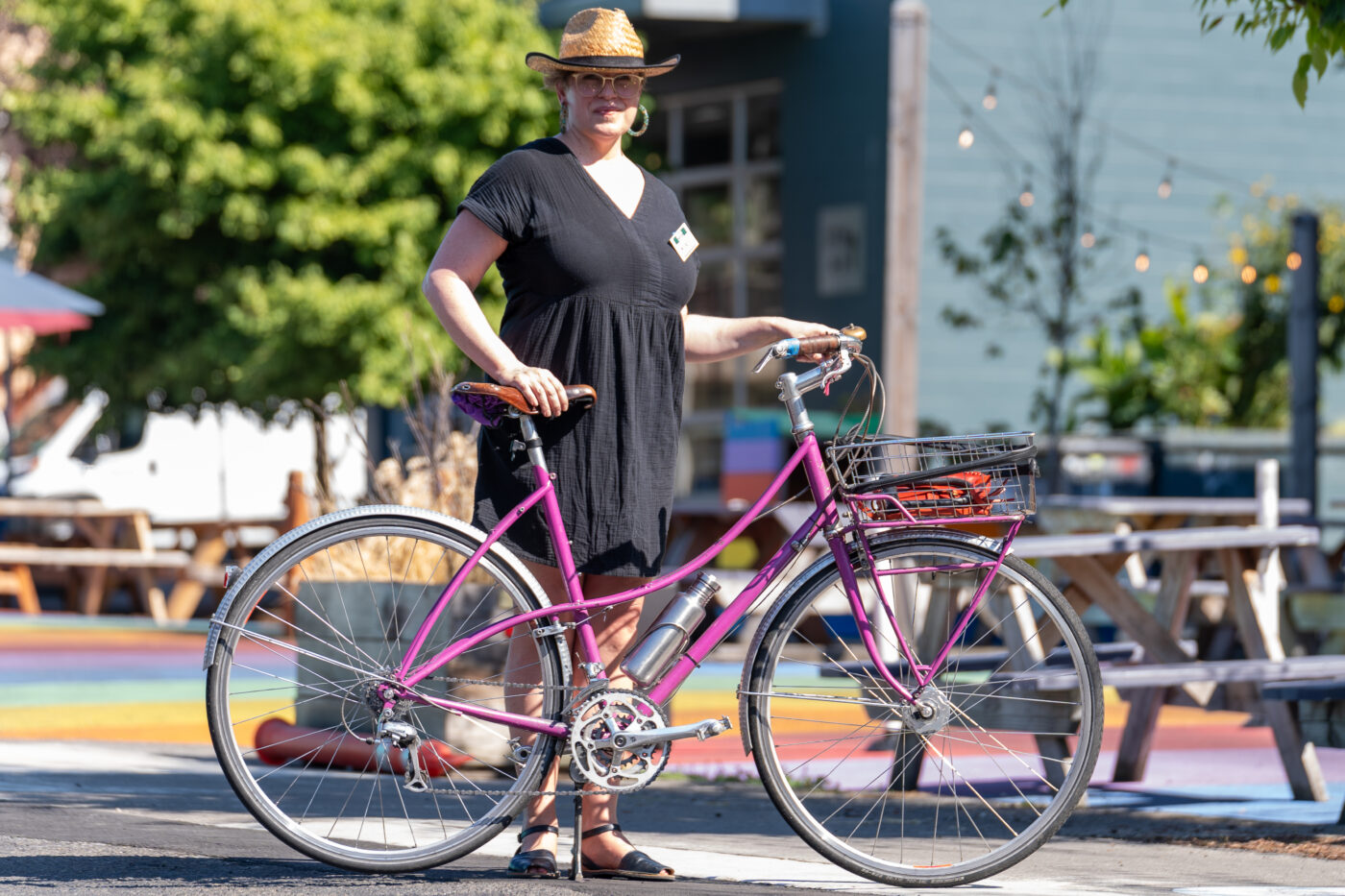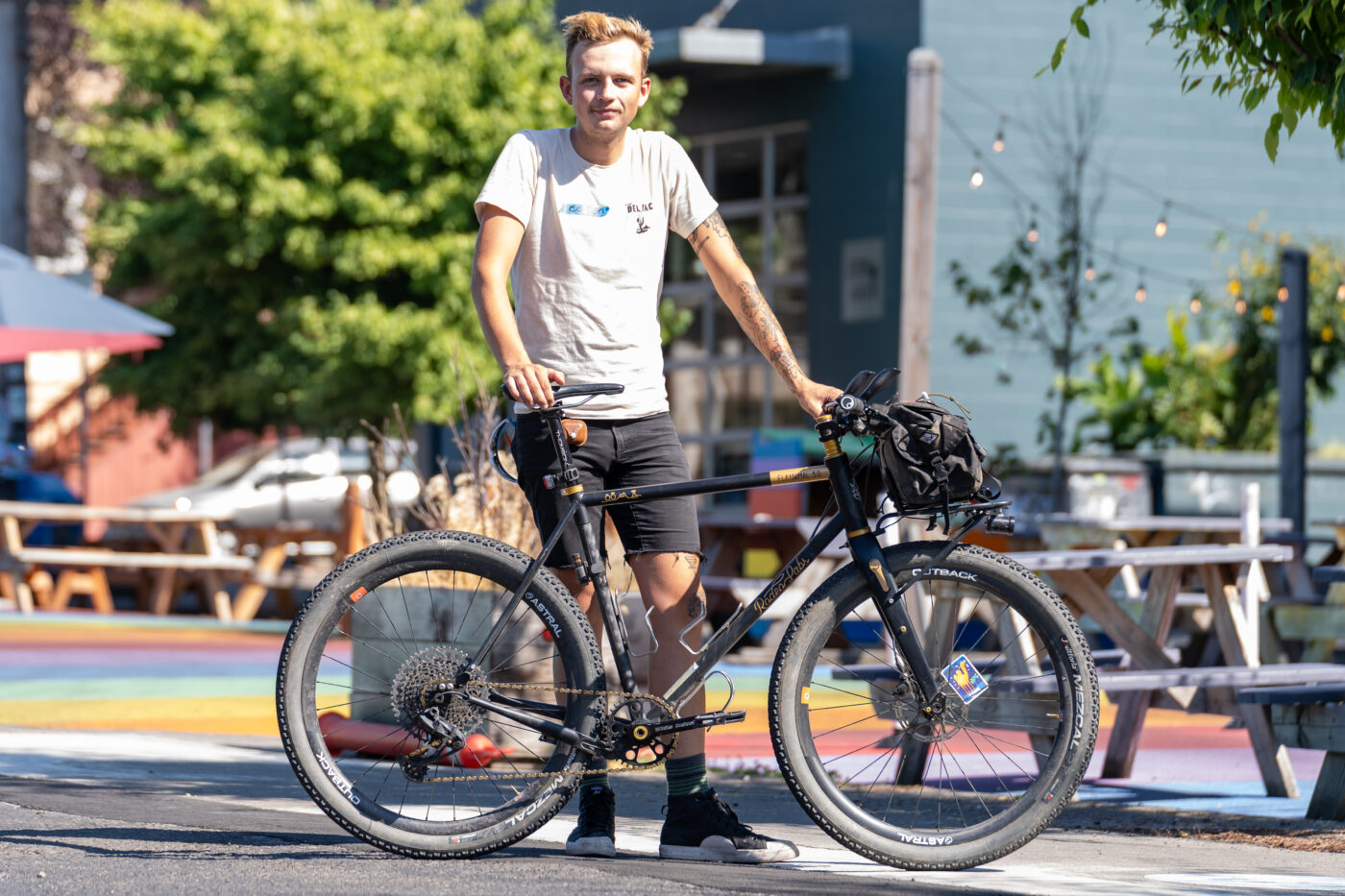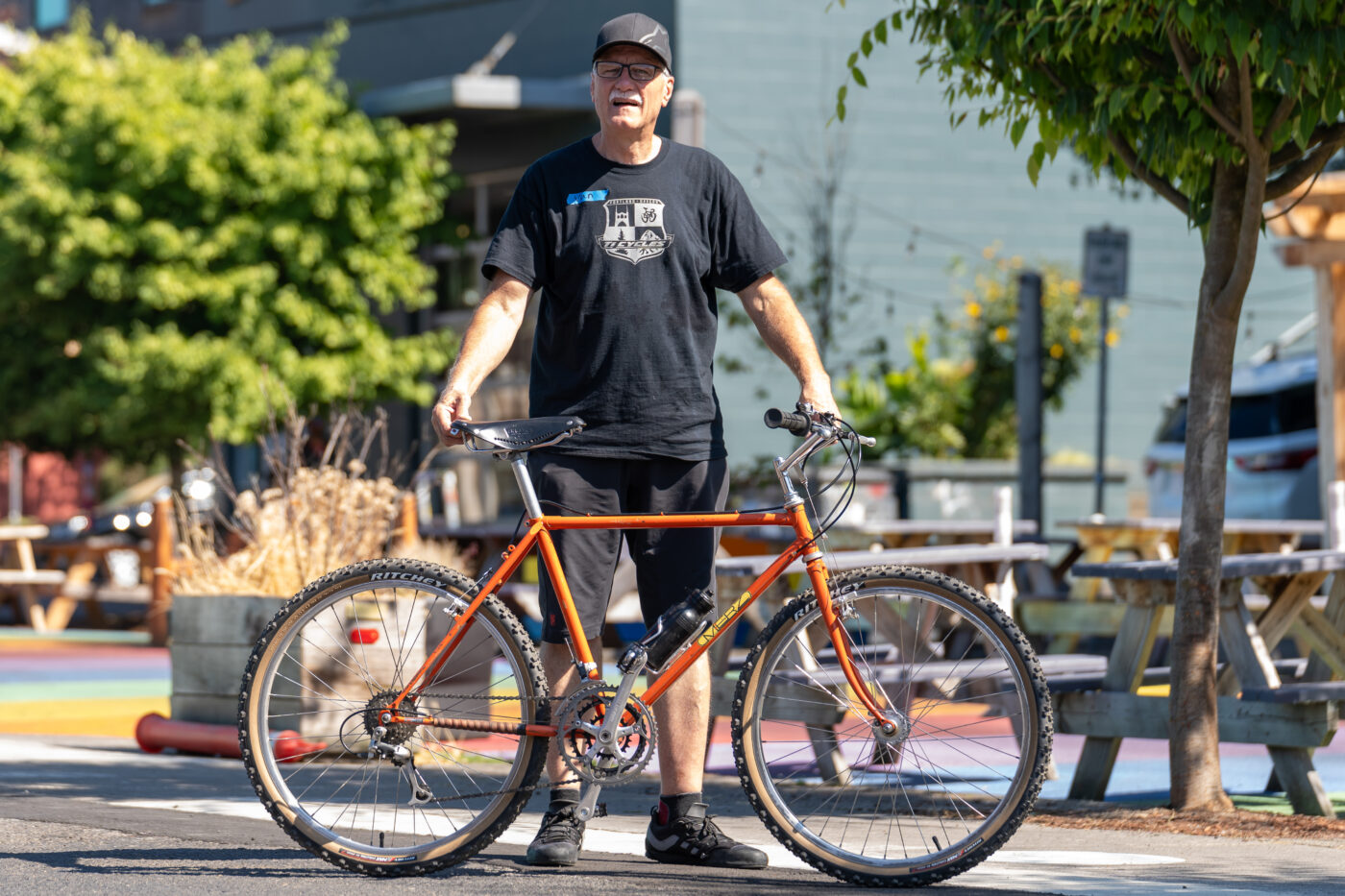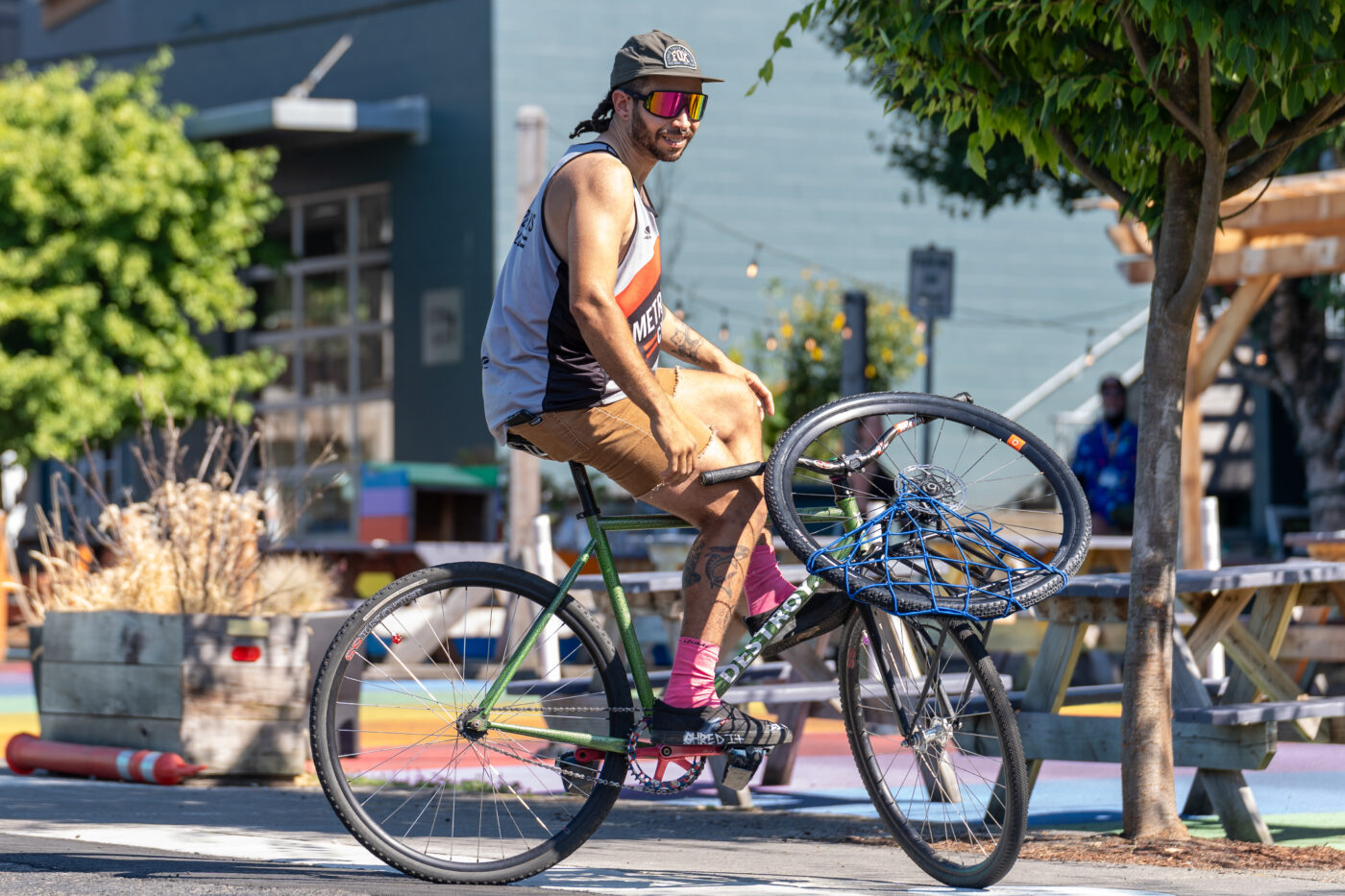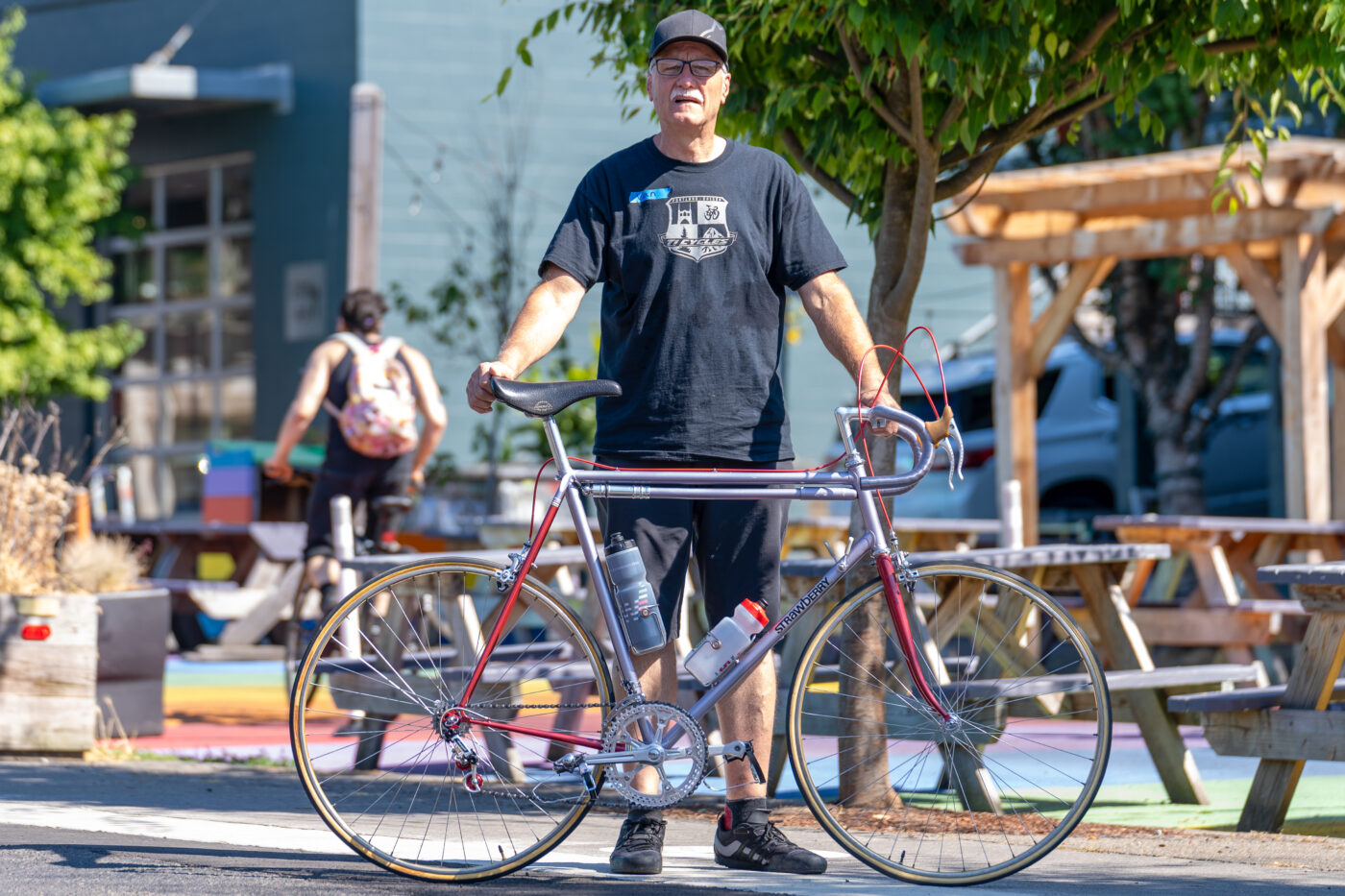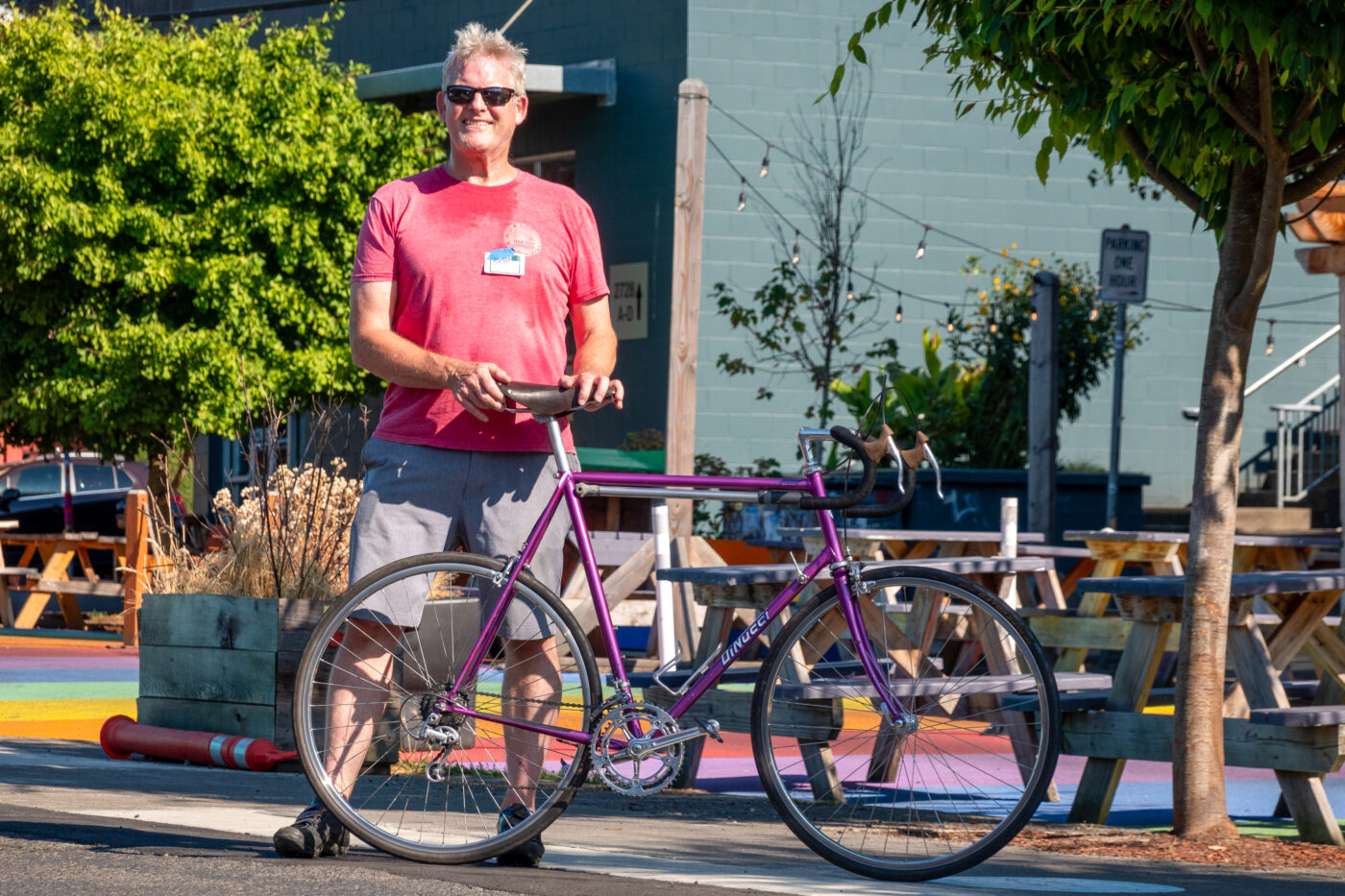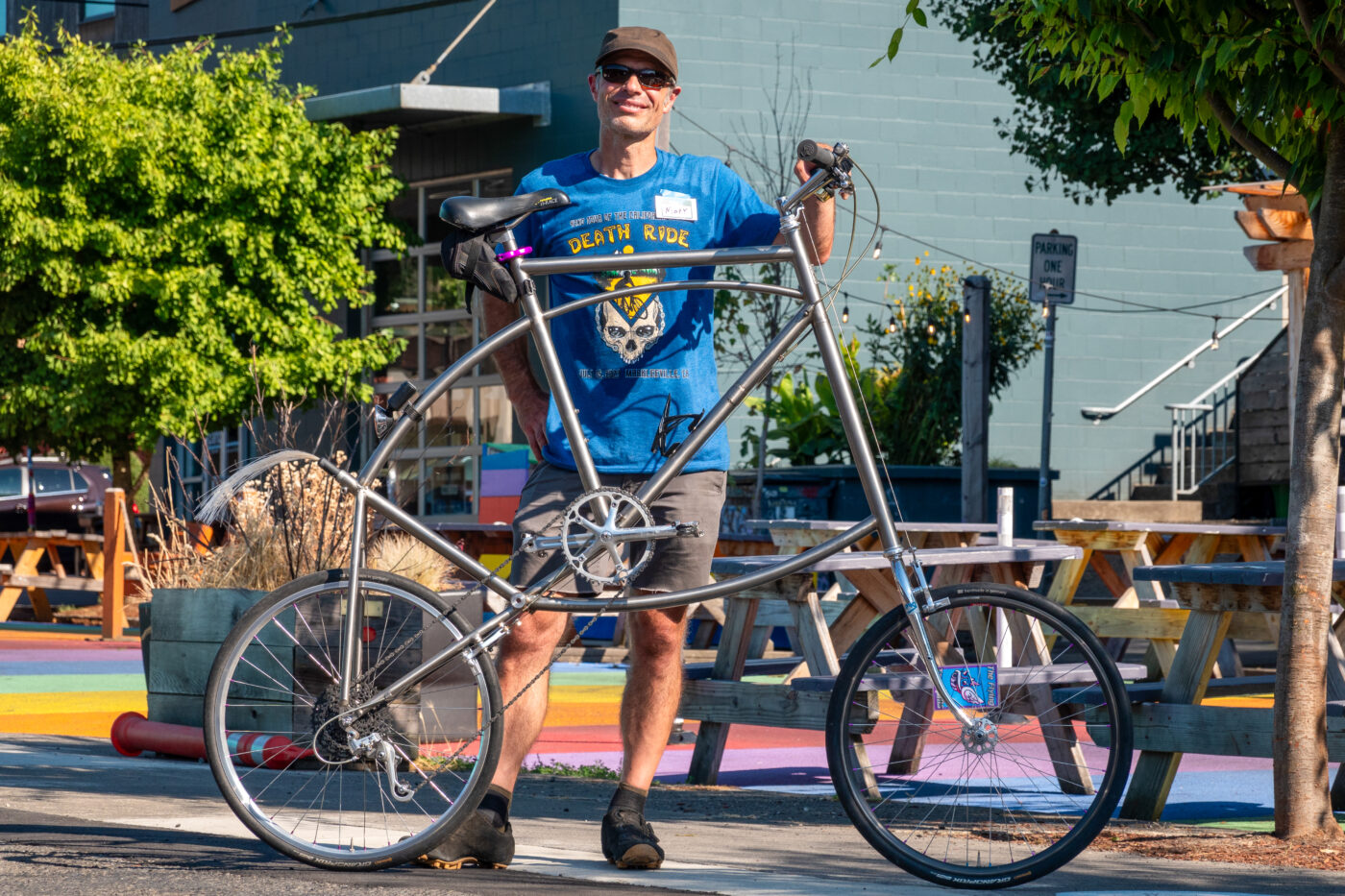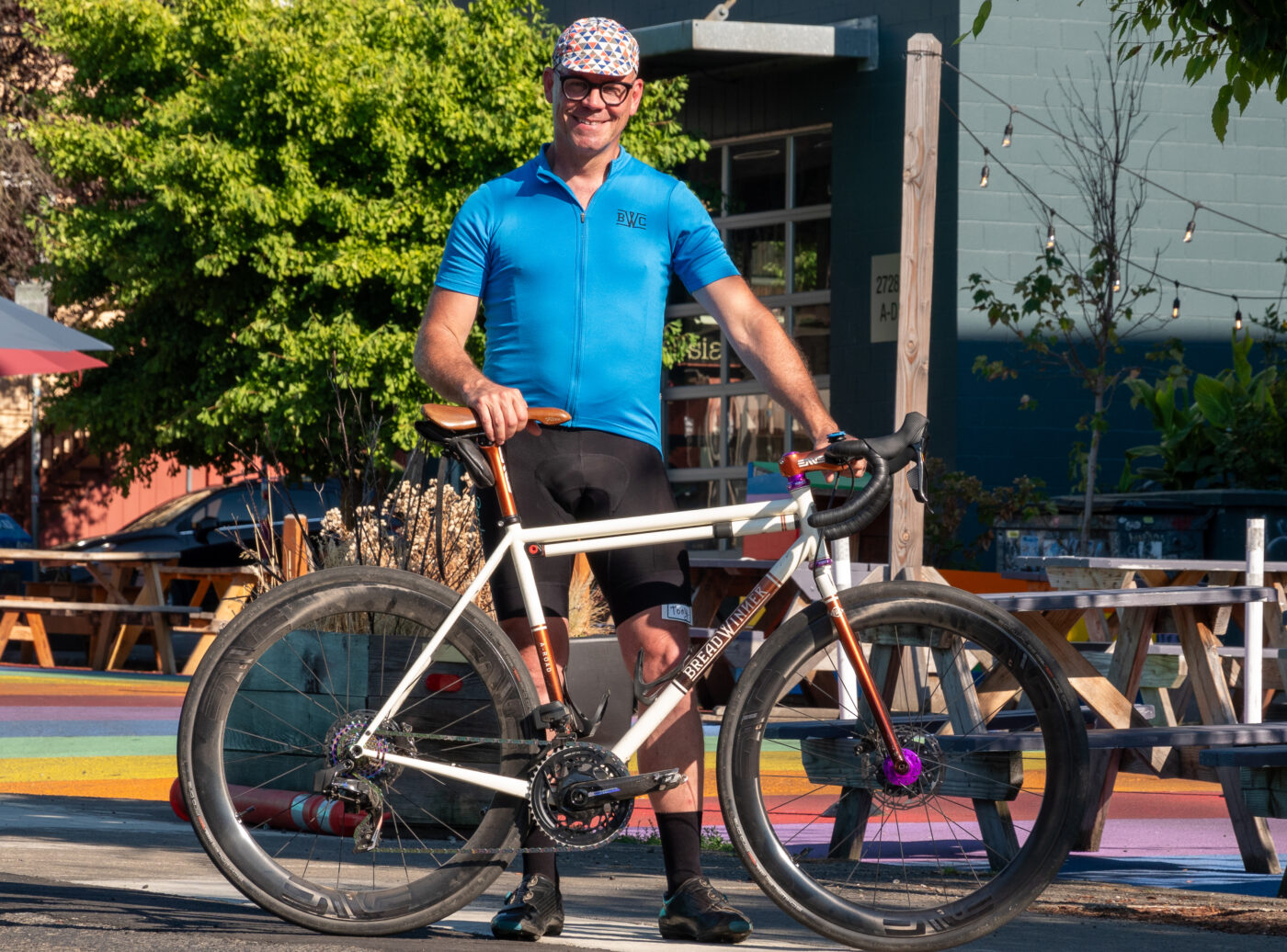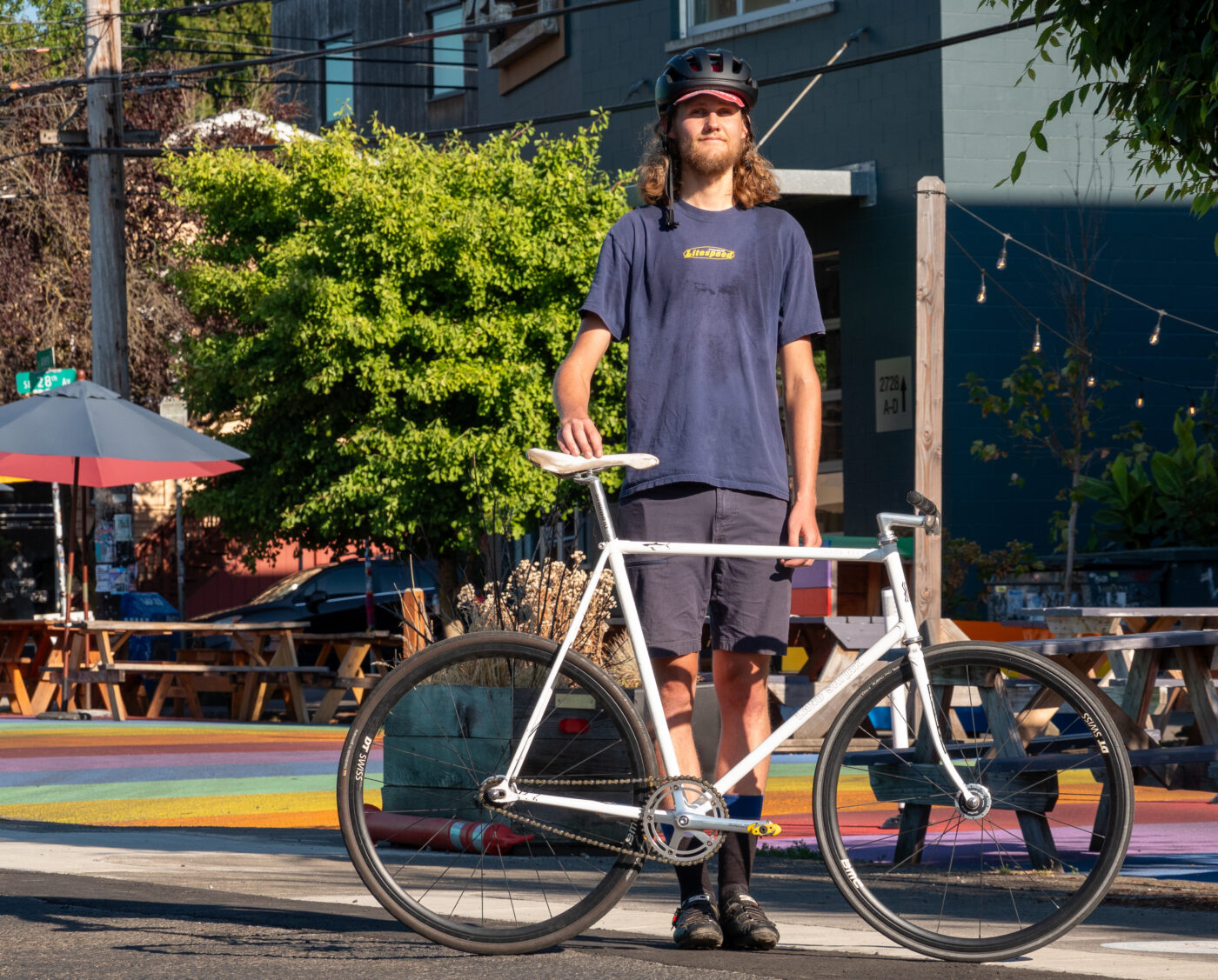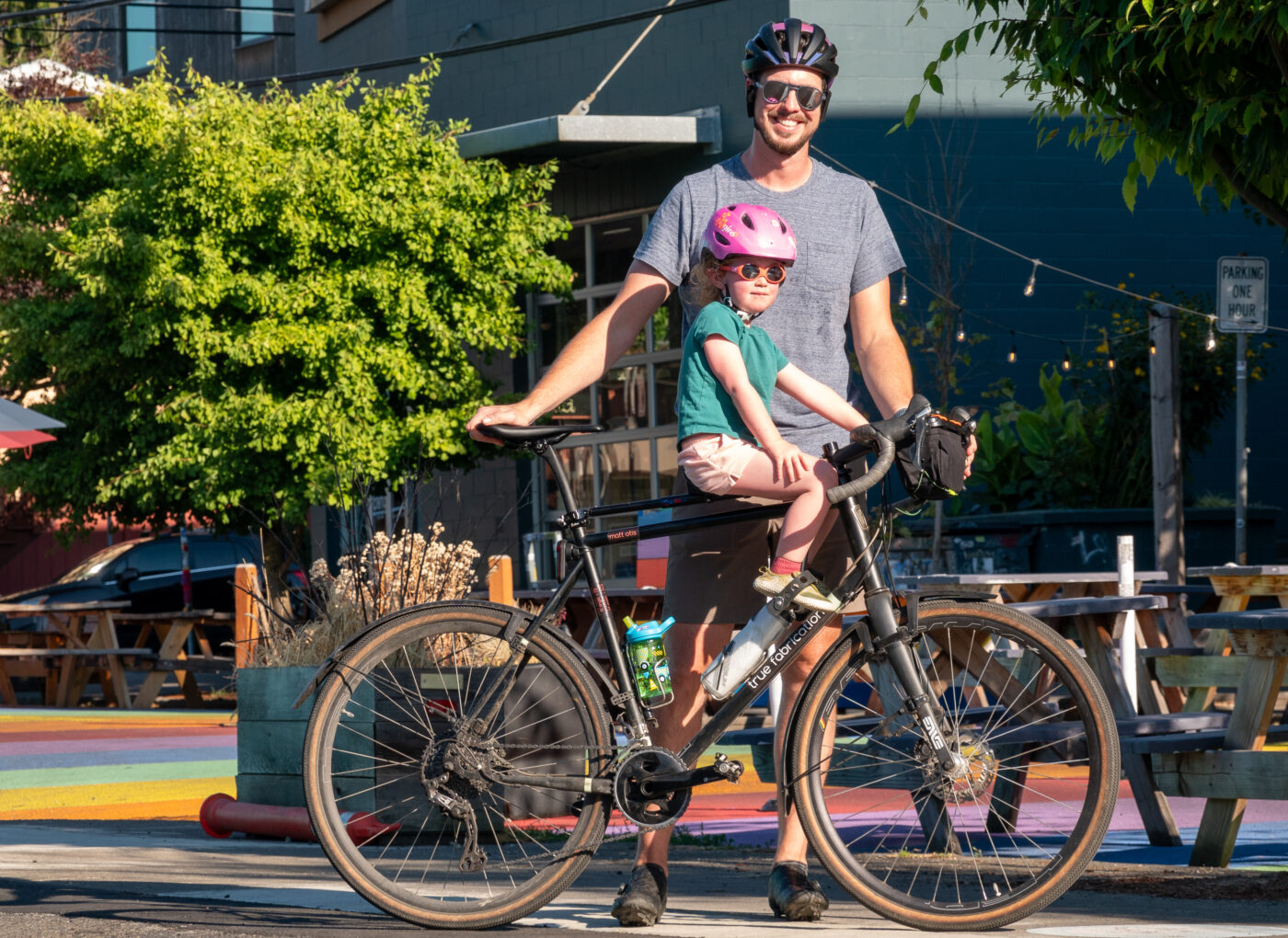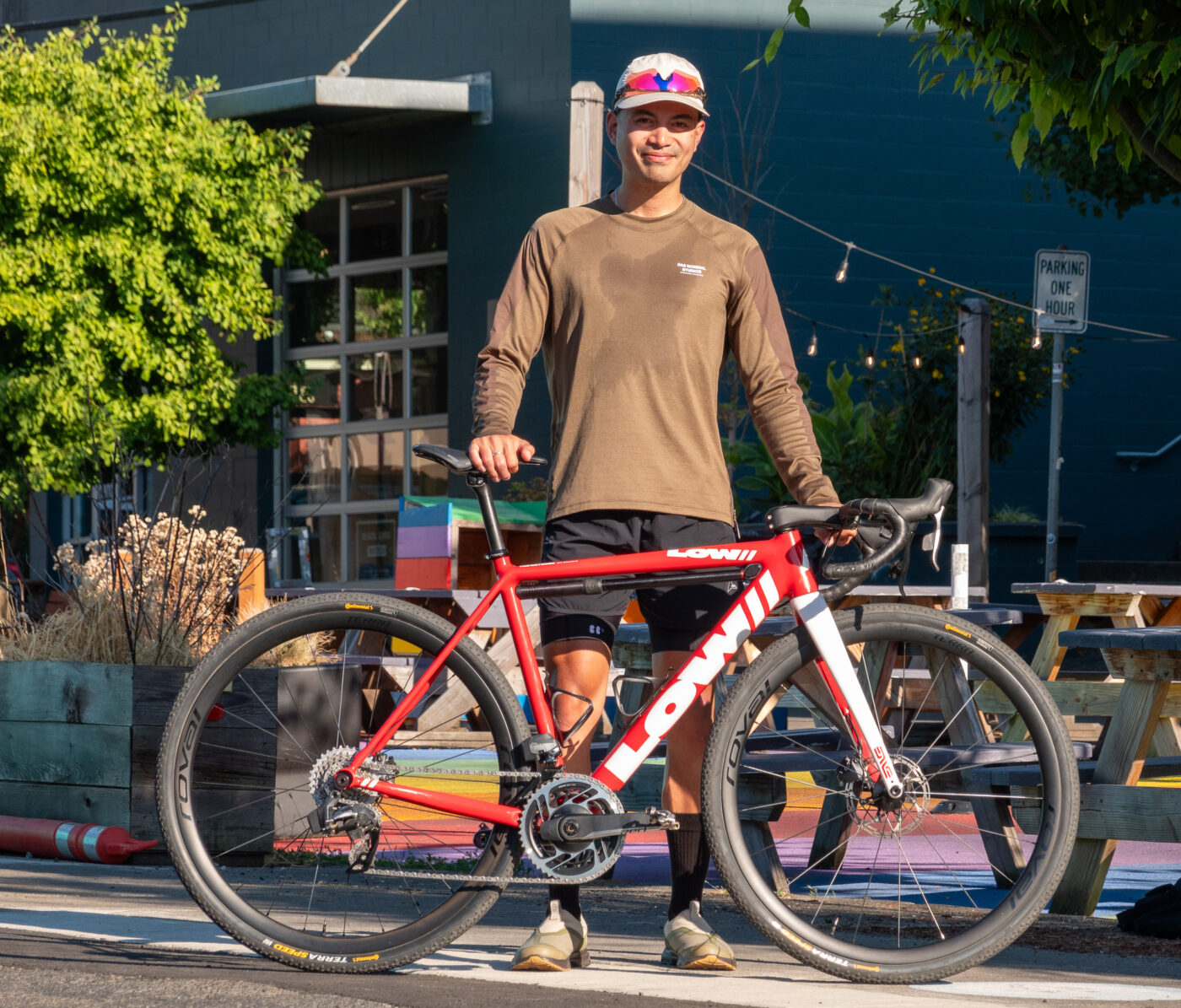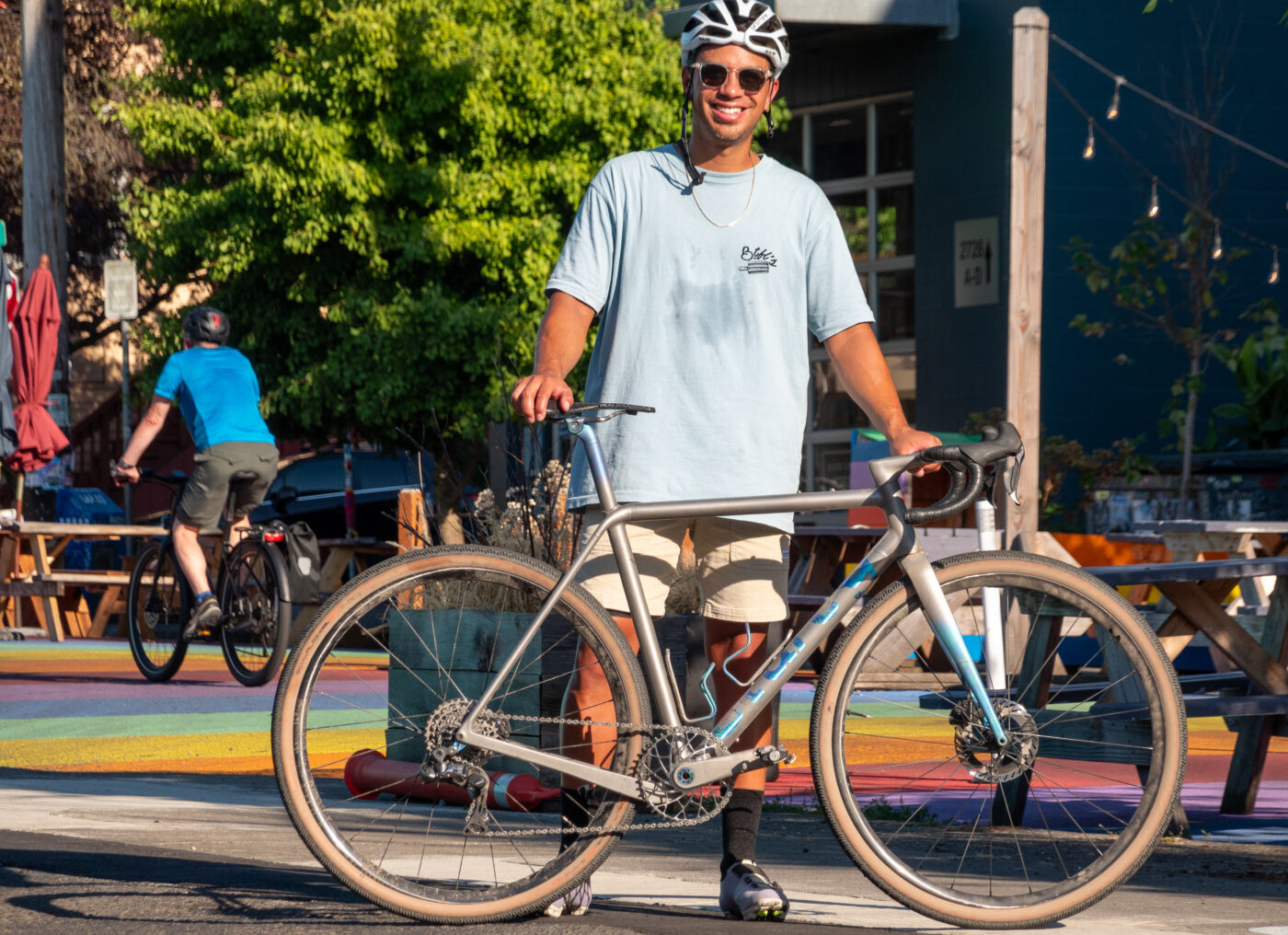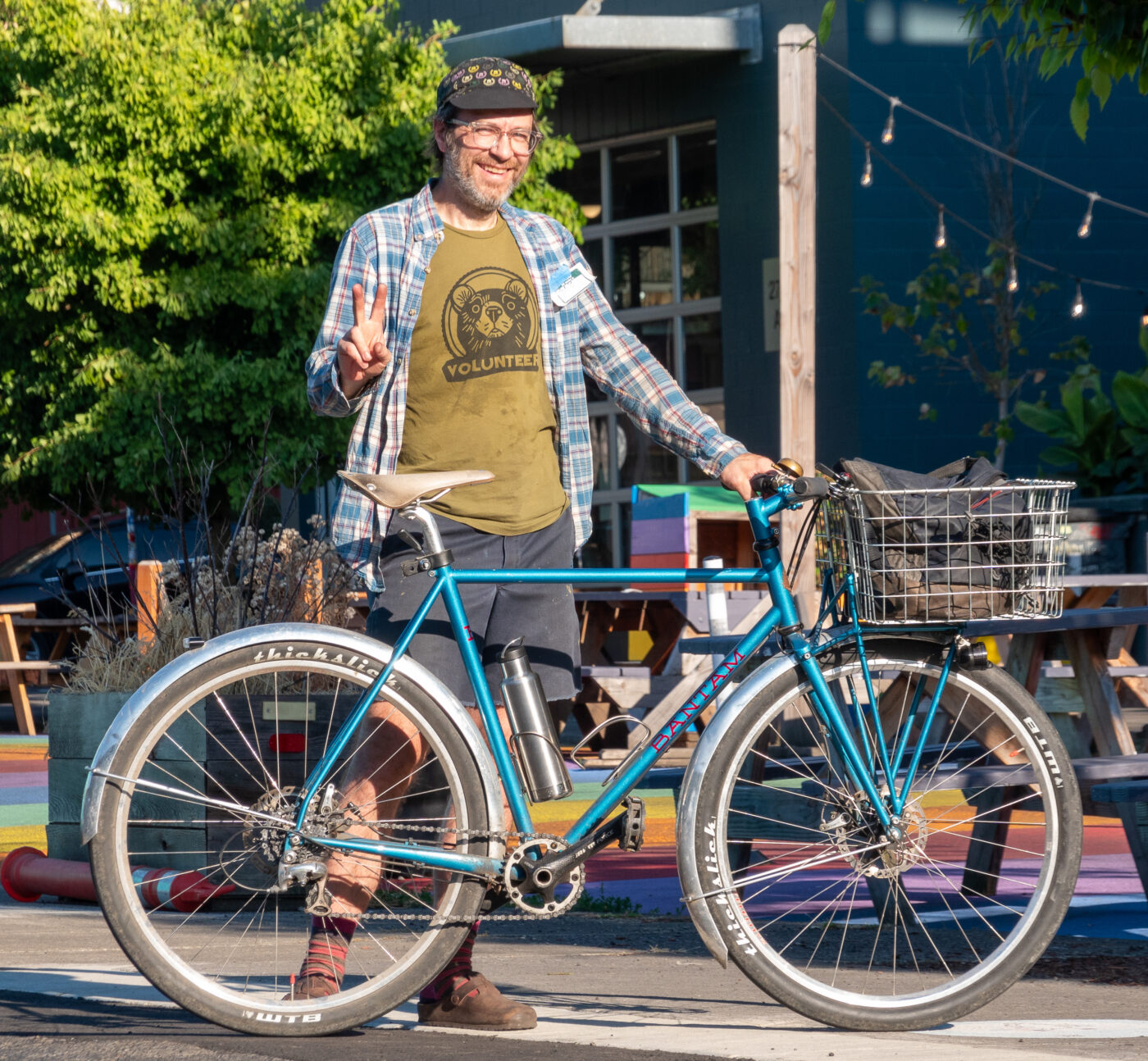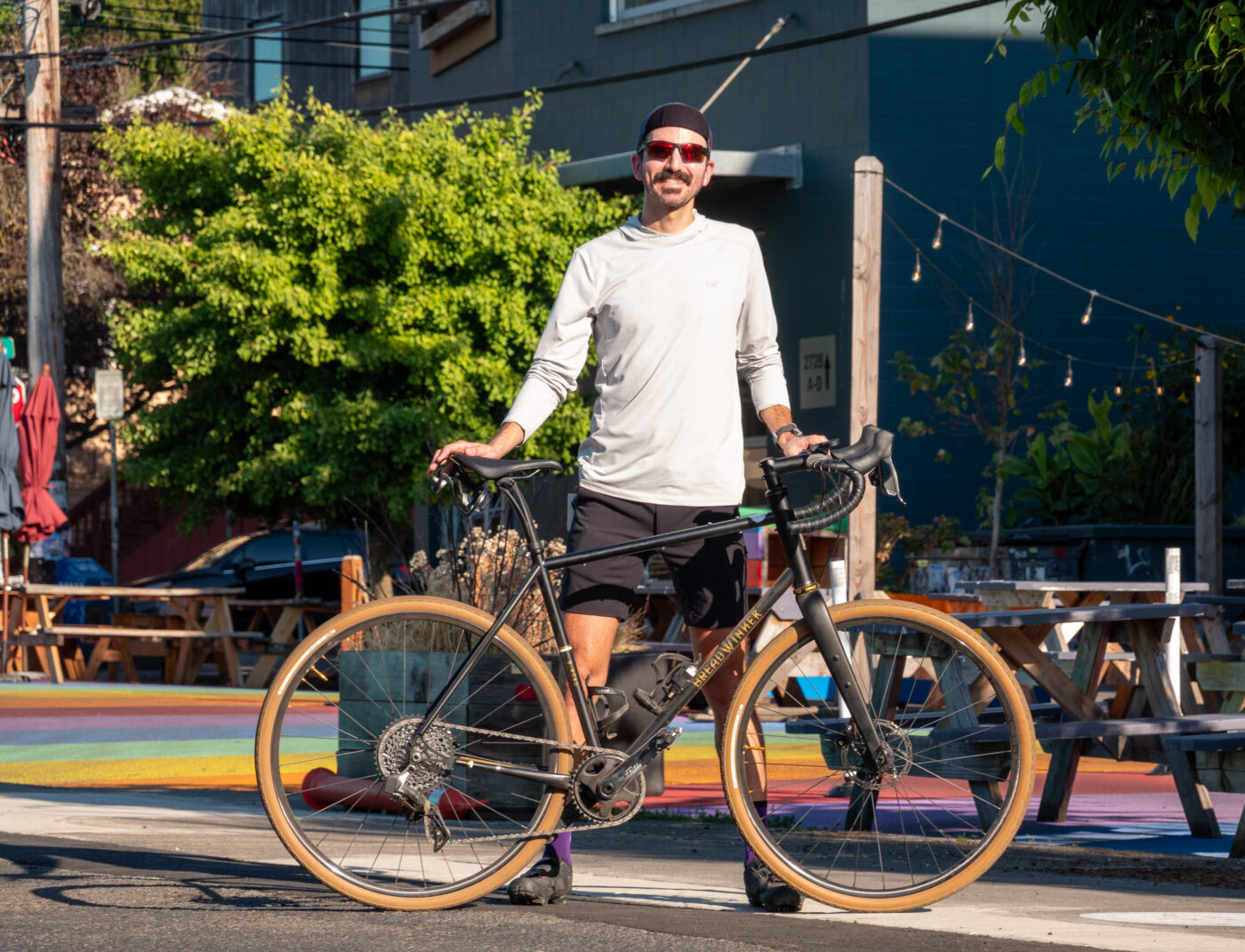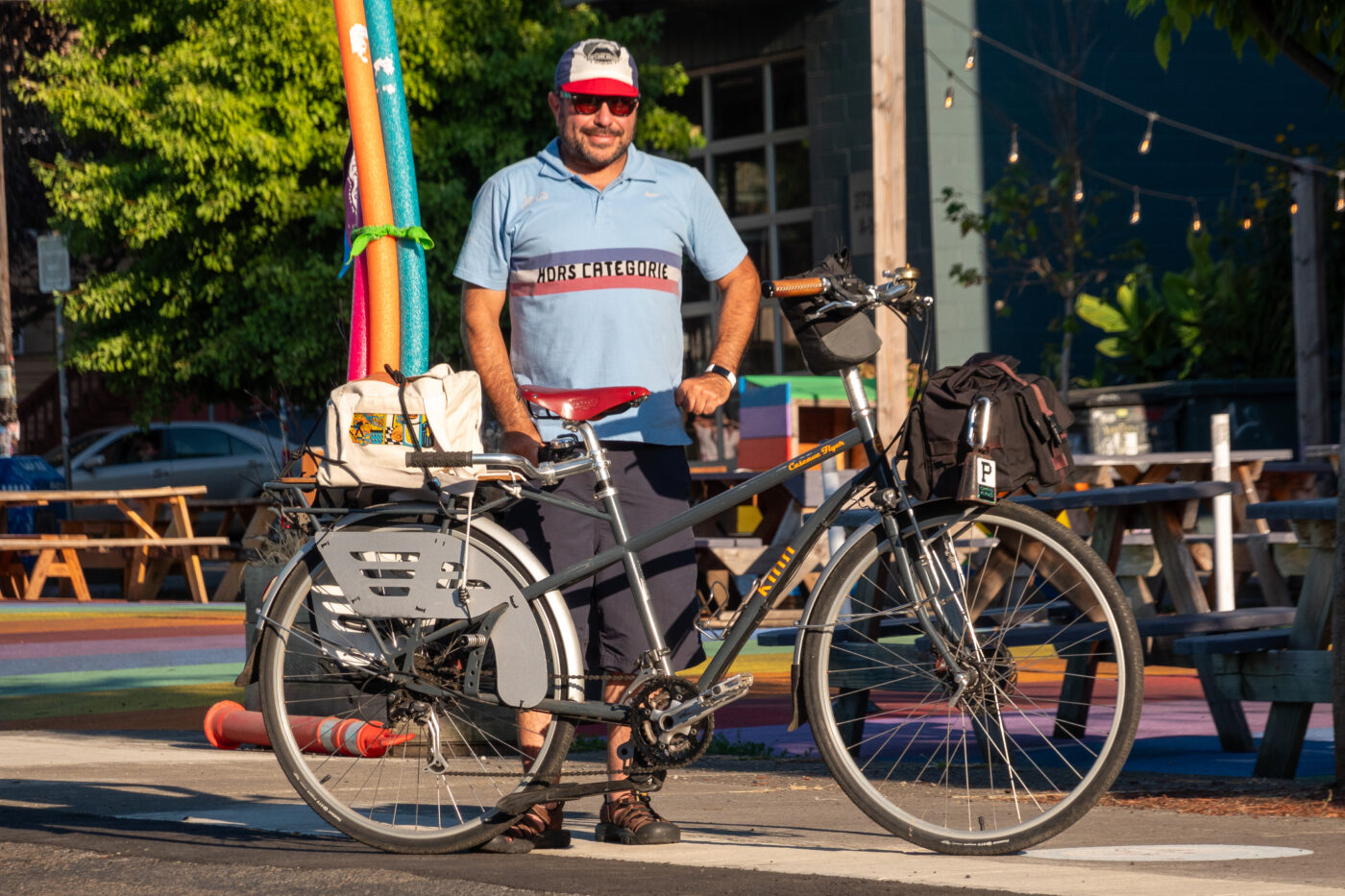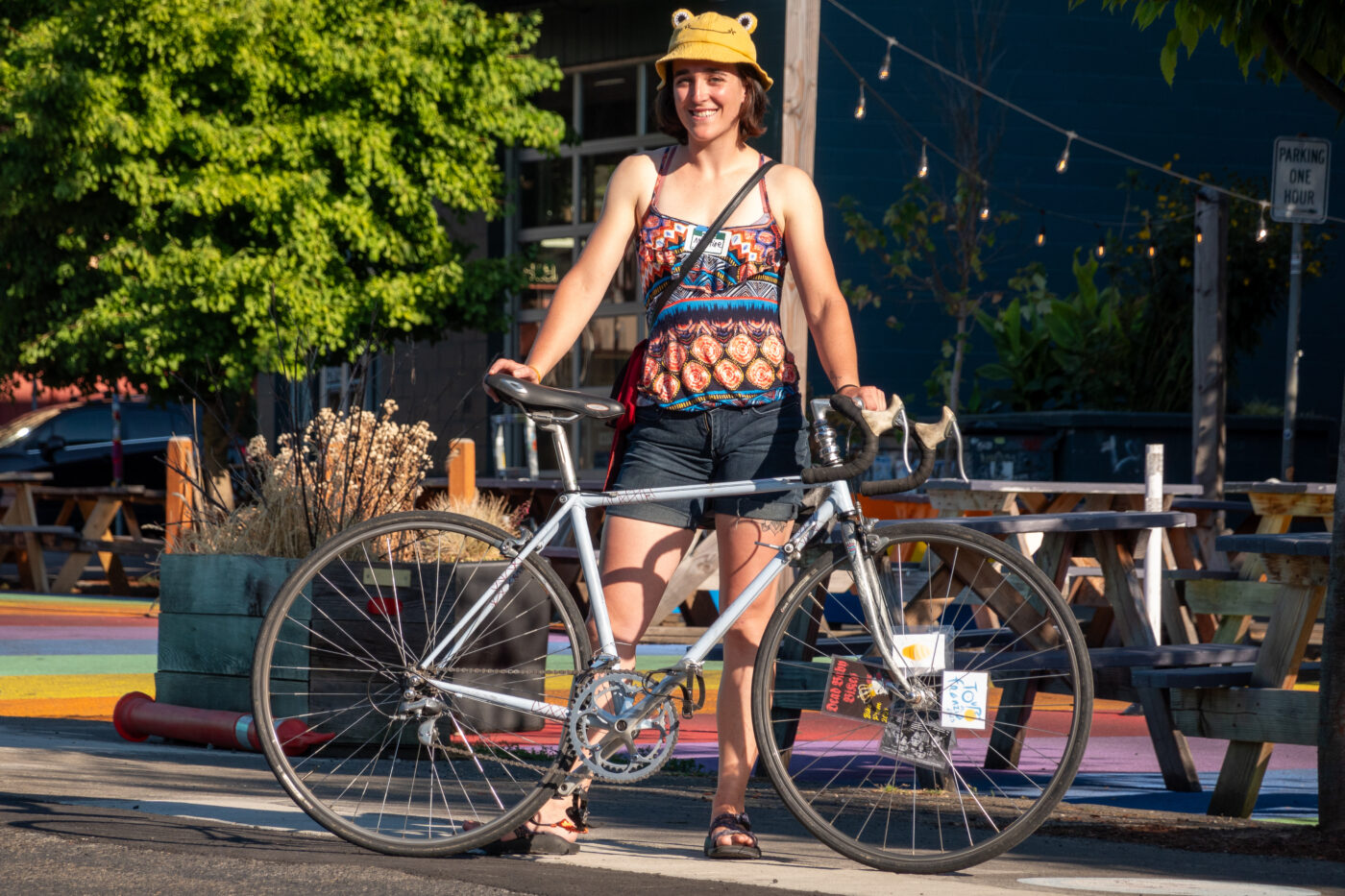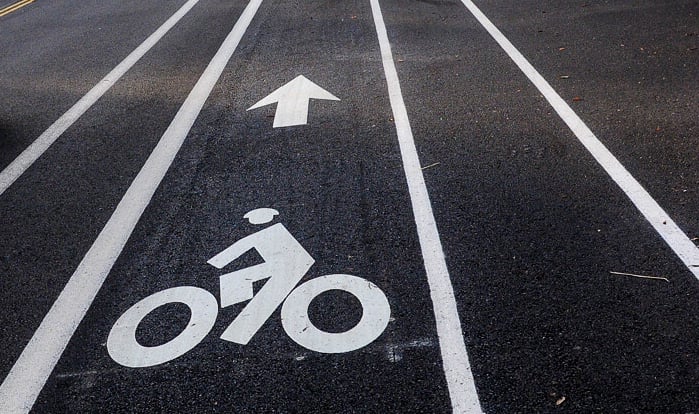According to traffic numbers and reviews from Portland bicycle riders, it hasn’t taken long for the Blumenauer Bridge to become a vital part of our cycling network.
Opened just one year ago, the $19 million, carfree bridge over I-84 at Northeast 7th Avenue gets a relatively robust amount of daily bicycle crossings. Despite a steep decline in the number of commuters due to the popularity of working from home, the Blumenauer Bridge has hosted an average of 773 bicycle crossings per day since May 1st.
The current average weekday bike traffic on the Blumenauer is a bit more than half of the volume we see on the Hawthorne Bridge. Not bad for a new bridge between the Lloyd and a low-density industrial area! (See traffic data below)
All signs point to further growth as Portland’s bicycle traffic continues to rebound post-pandemic and more bicycle-oriented development springs up in the area.
But what do bike riders think of the bridge? I asked folks via Instagram last week to share their thoughts and the response was overwhelmingly positive. A few people had quibbles and some still prefer to use NE 12th (because it’s flat); but overall it’s clear the Blumenauer has earned a space in the hearts of many Portland cyclists.
Below are some of the responses:
Ben G – While it’s really neat. It’s kind of out of the way and doesn’t really connect me to where I go very often. It is more stressful on Lloyd/7th than just staying on Esplanade or Water to get north/south.
Sam – It’s about the only bike infrastructure this city has done in the last couple years that is actually useful to cyclists, granted they tried to f*** it up with that nasty bump on the south end.
Aaron Brown – Big fan of the bridge; I make a point of going a few blocks out of my way to use it most times I’m crossing the gulch anywhere near it. Wish that 7th through the Lloyd didn’t have the streetcar tracks, and hopeful PBOT is ambitious with significantly limiting car access to the blocks south of the bridge as part of the green loop. Also, while it’s disappointing the bridge wasn’t built by union organized labor, the bridge ultimately cost $19 million. We could literally build 100 bike/per bridges of this size over freeways across the region for the price of the rose quarter freeway expansion!
Kendra Goffredo – A true game changer. Can I have another?
Taylor Griggs – I use this bridge constantly. I can’t believe I ever had to use 12th to cross the freeway; that intersection at Lloyd is much trickier to navigate than just taking 7th all the way down. I don’t really think about the bridge itself very often, it just feels like part of the entire 7th Ave corridor to me. And now that the Sandy/7th crossing is improved and there are crosswalks or bike lanes throughout the whole Lloyd area on 7th, it’s much more pleasant to use.
Katie – I love the Blumenauer Bridge, my boyfriend and I use it as a way to get to our favorite breakfast restaurant. I don’t always feel the safest, for obvious reasons, riding with vehicles so it’s nice to have a bridge that focuses on micro mobility!
John A – I was excited about this bridge when I first heard about it as I work at the Portland State Office Building which is across the street. Quite a bummer that I travel east from work to home which makes this bridge fairly useless to then go east since it means having to backtrack to get back up to Irving bike lane (not many options with the school and sports fields blocking going east at 12th.) I did that once, but felt silly to increase my commute, so I still go Lloyd and then use the 12th avenue bridge. Sometimes Lloyd Blvd. does feel dangerous enough to make me think that the long way around would be better. If the insane constant speeding along Lloyd doesn’t improve, maybe it will seem like the better choice.
On a non-bike viewpoint, it did open up the entire south side of the freeway to venture into for lunch time, which wasn’t really walkable in a lunch break when the only options were Grand (which is half blocked from crossing the freeway entrance) or 12th.
Cam – I skip it most days on my commute to work and take the shared bridge on 12th because I don’t wanna bike uphill and skip it on the way home because the path on 7th on the south side of the bridge has so much downhill traffic flying by with a lot of stop signs for bikes on 7th.
Daniel Remer – I don’t venture out to NE Portland often, but when I do I know to get home safely all I need to do is find 7th and head south.
Nathan Berres – I absolutely love this bridge. It’s the connecting point between my home in NE and where I work in SE. Not only is the intersection on the north side amazing bike infrastructure, but the bridge is beautiful and being able to ride across it going home seeing all the traffic I’m skipping makes me selfishly happy lol. I love this bridge, I hope we make more like them in the future where they’re needed.
Erik Smith – It’s a great bridge, but the infrastructure around it just isn’t great. Going south, it just kicks you into such an odd, non-designated bike area where I have seen many cars run stop signs. Once you get to couch, it’s slightly better with the lights, but feels like it needs a lot of work to tie you into where 7th & Sandy meet. North of the bridge, i wish there was slightly better or protected paths on 7th. It can be a bit rowdy til you get Tillamook.
Jana – Love it and I use it all the time. It’s a critical north-south route. I wish the bidirectional bike lane on the north side continued down to the esplanade. That’s a very awkward connection. But otherwise it’s great and I’m excited for the 7th Greenway to be completed.
Don I – Not become part of my routine, I’ve stuck to the esplanade because the intersections on 7th are scary for bikes, especially at Stark, and I’d still could be inconvenienced by a train crossing at 7th in SE to get to work. So I haven’t been over it in about a year
Bridget – I love it! I work two blocks from the bridge and it creates and easy and safe way to get to work. Bike lanes and traffic signals work great and are respected by cars. Plus it’s a great place to walk in the middle of the work day. 10/10!
Becky M – I love the idea behind it and think it’s beautiful! But I’ve found that I usually still end up using the 12th Ave bridge instead. I don’t go in that direction too frequently, so I may just be slow to break the habit of that route. And I appreciate how flat 12th is!
Mike – Use it all the time, and while steep in the return, the descent is the highlight of my route down 7th. Absolutely love it and love having cycling specific infrastructure.
What do you think about the Blumenauer Bridge? Is it an important part of your route?



